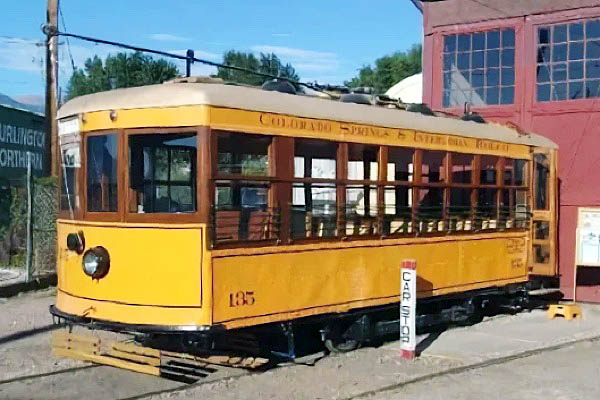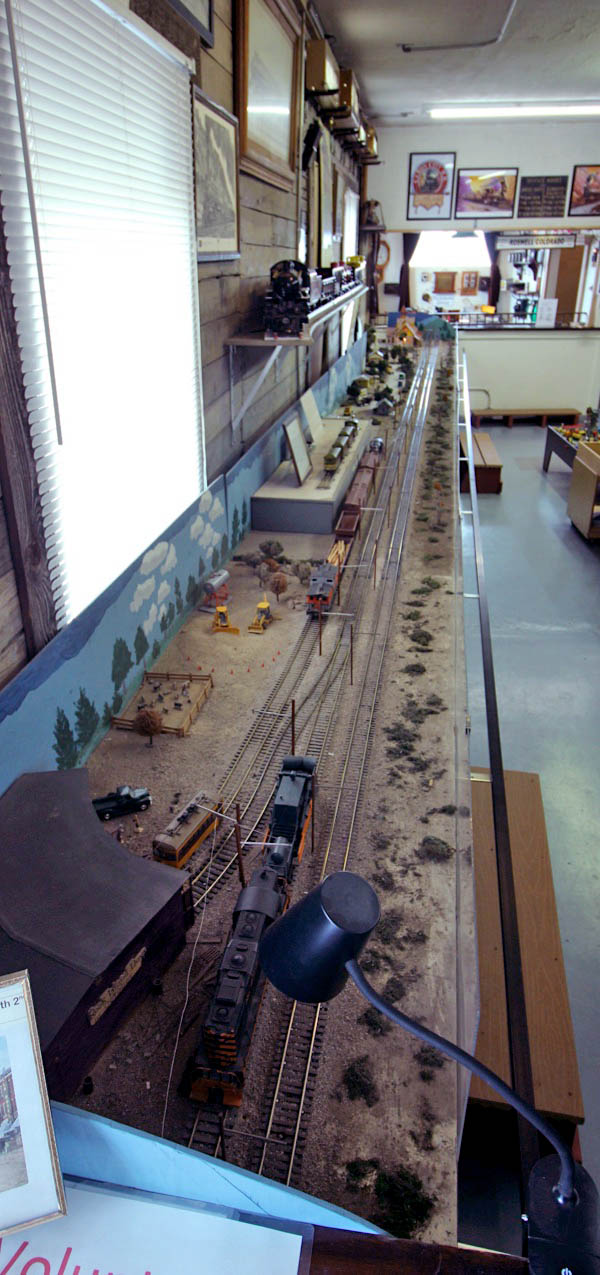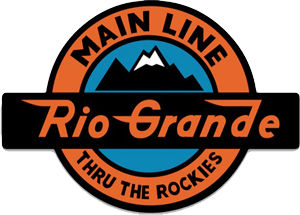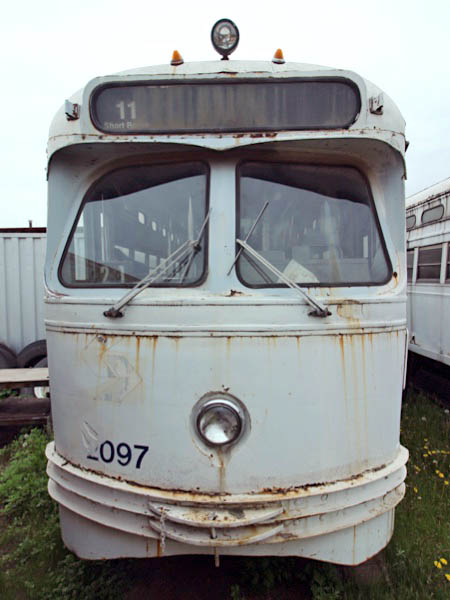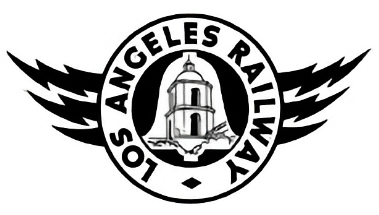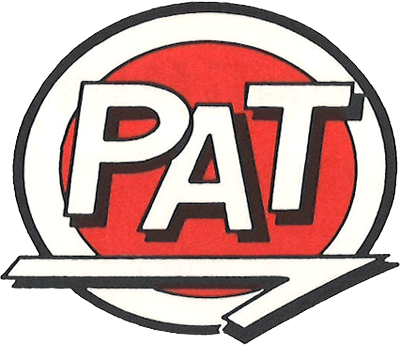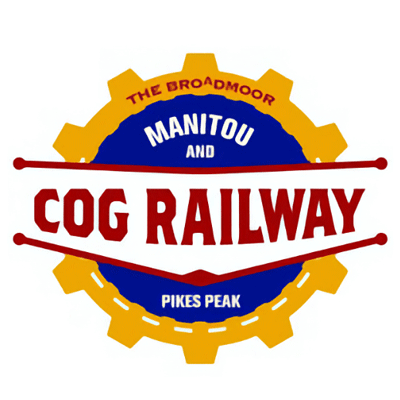
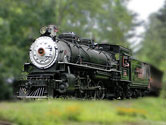






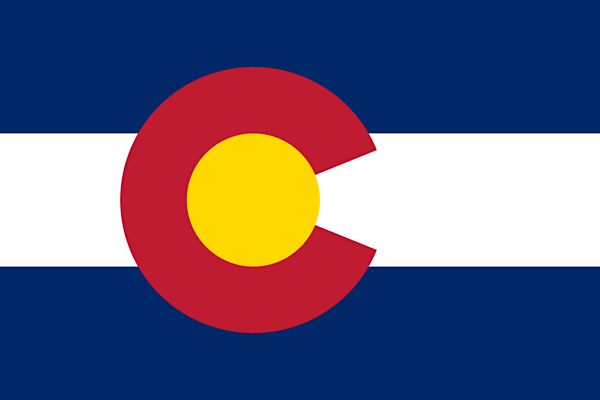


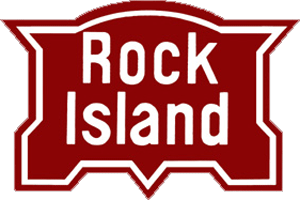 |
Pikes Peak Trolley MuseumPikes Peak Historical Street Railway |
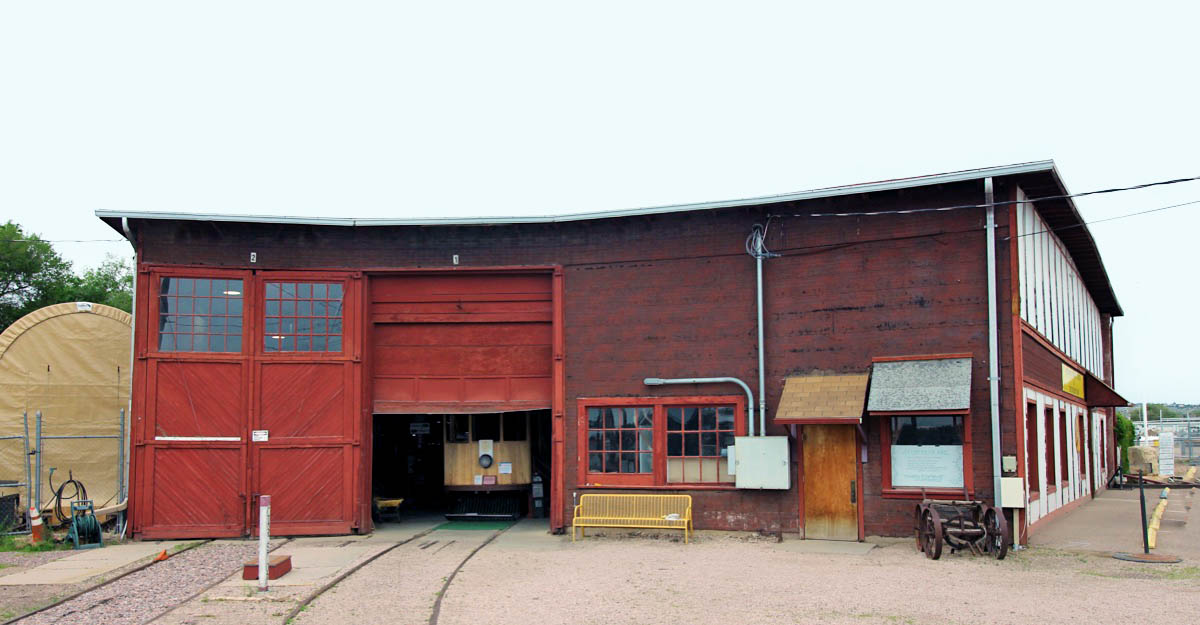
Colorado Springs, Co / May 2023 / RWH

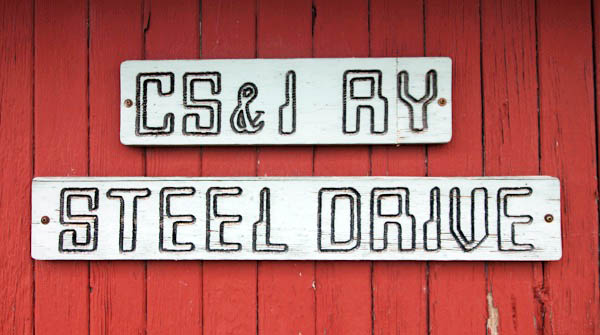
 ounded on June 30, 1982, our mission has been to preserve the history and artifacts of the Pikes Peak region’s street railways. The donation of CS&I Car #59 to the Foundation, one of only six remaining Laclede cars, began the additional mission to restore to the streets of Colorado Springs and neighboring communities an electrified, full service rail transportation system using historic and vintage streetcars.
ounded on June 30, 1982, our mission has been to preserve the history and artifacts of the Pikes Peak region’s street railways. The donation of CS&I Car #59 to the Foundation, one of only six remaining Laclede cars, began the additional mission to restore to the streets of Colorado Springs and neighboring communities an electrified, full service rail transportation system using historic and vintage streetcars.

 ocated in the Roswell community of Colorado Springs, Colorado, the Pikes Peak Trolley Museum inhabits a former Chicago Rock Island & Pacific (Rock Island) locomotive roundhouse erected in 1888. The museum is operated by the Pikes Peak Historical Street Railway, and maintains a collection of streetcars, interurbans, cog railcars, and mainline rolling stock. The roundhouse interior houses a small museum of trolley artifacts, several model railroads, and offices, and a restoration shop. The museum's shop is sometimes utilized by the Friends of the Cumbres & Toltec Scenic Railway for narrow gauge restoration projects.
ocated in the Roswell community of Colorado Springs, Colorado, the Pikes Peak Trolley Museum inhabits a former Chicago Rock Island & Pacific (Rock Island) locomotive roundhouse erected in 1888. The museum is operated by the Pikes Peak Historical Street Railway, and maintains a collection of streetcars, interurbans, cog railcars, and mainline rolling stock. The roundhouse interior houses a small museum of trolley artifacts, several model railroads, and offices, and a restoration shop. The museum's shop is sometimes utilized by the Friends of the Cumbres & Toltec Scenic Railway for narrow gauge restoration projects.
In 1995, the Pikes Peak Historical Street Railway acquired nine Southeastern Pennsylvania Transit Authority (SEPTA) PCC streetcars, which were delivered that year. The intent of the acquisition was to restore the cars for street railway operations in Colorado Springs. Subsequently, the Foundation was franchised by the city to operate such a system as the Colorado Springs & Interurban Railway. Efforts to inaugurate that service are ongoing.
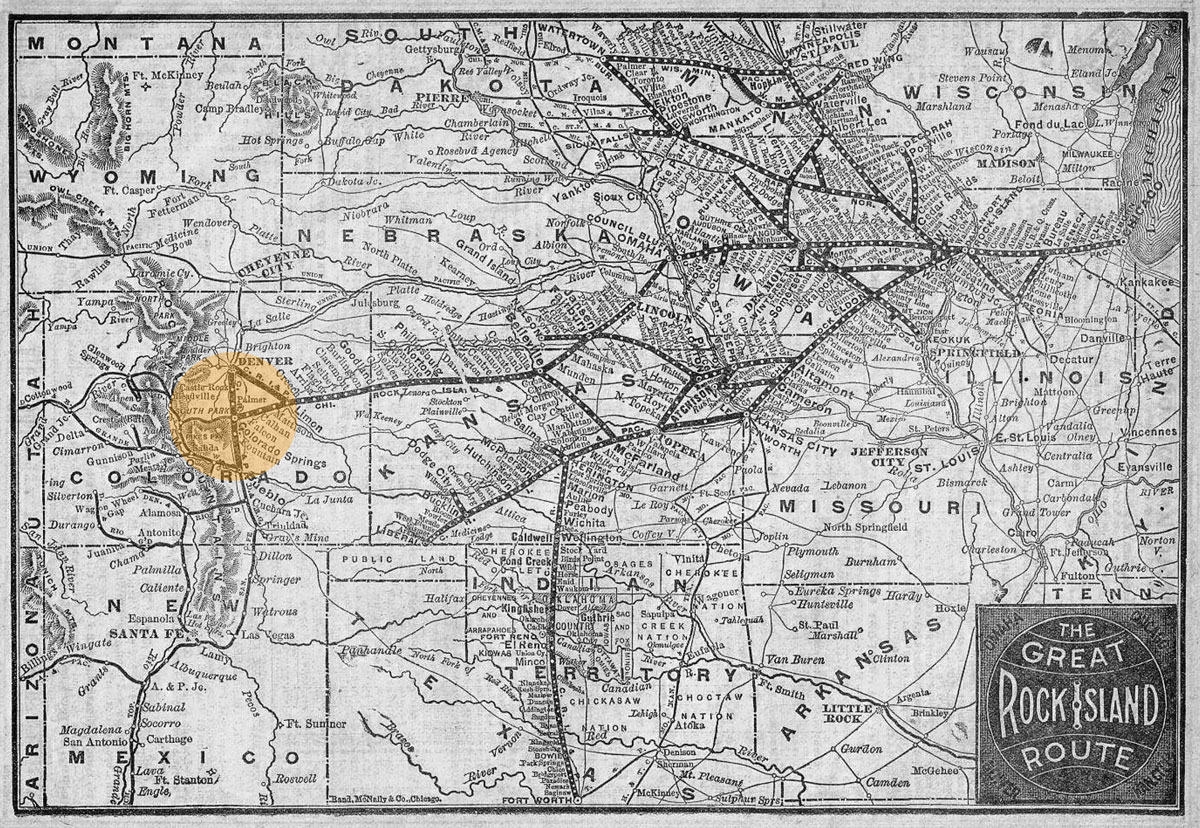
1895 Official Guide map / collection

collection
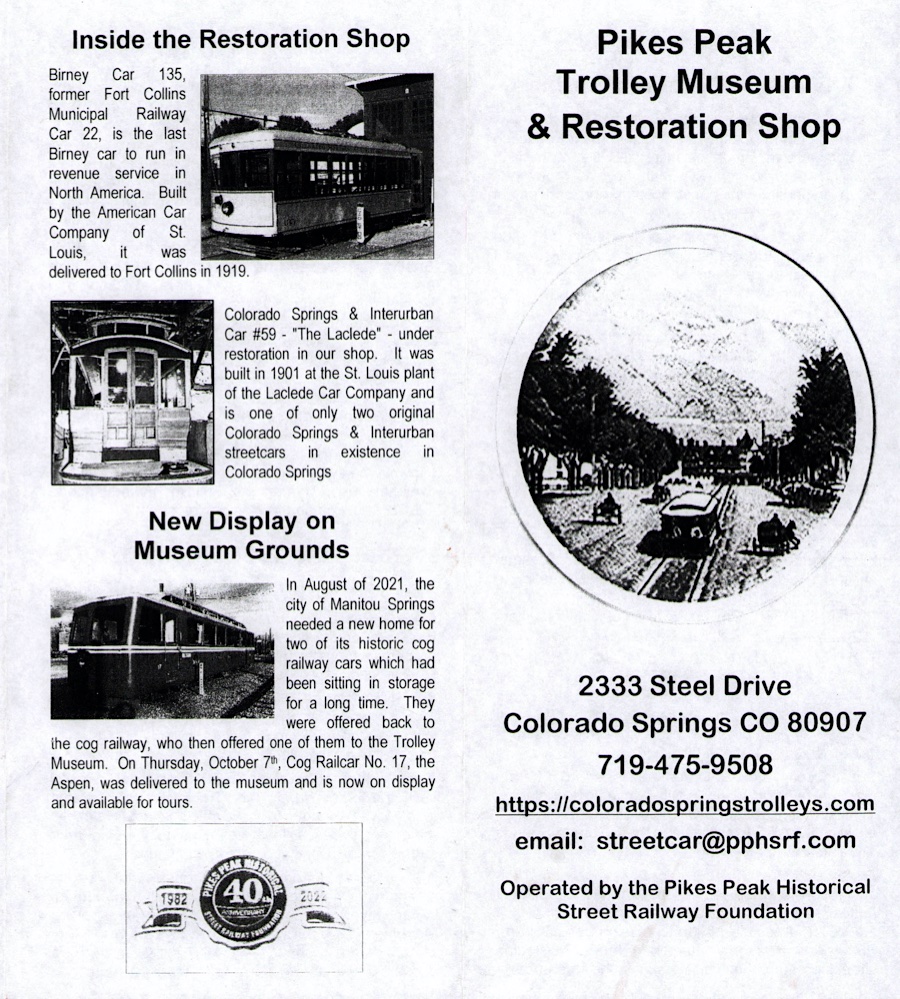
collection
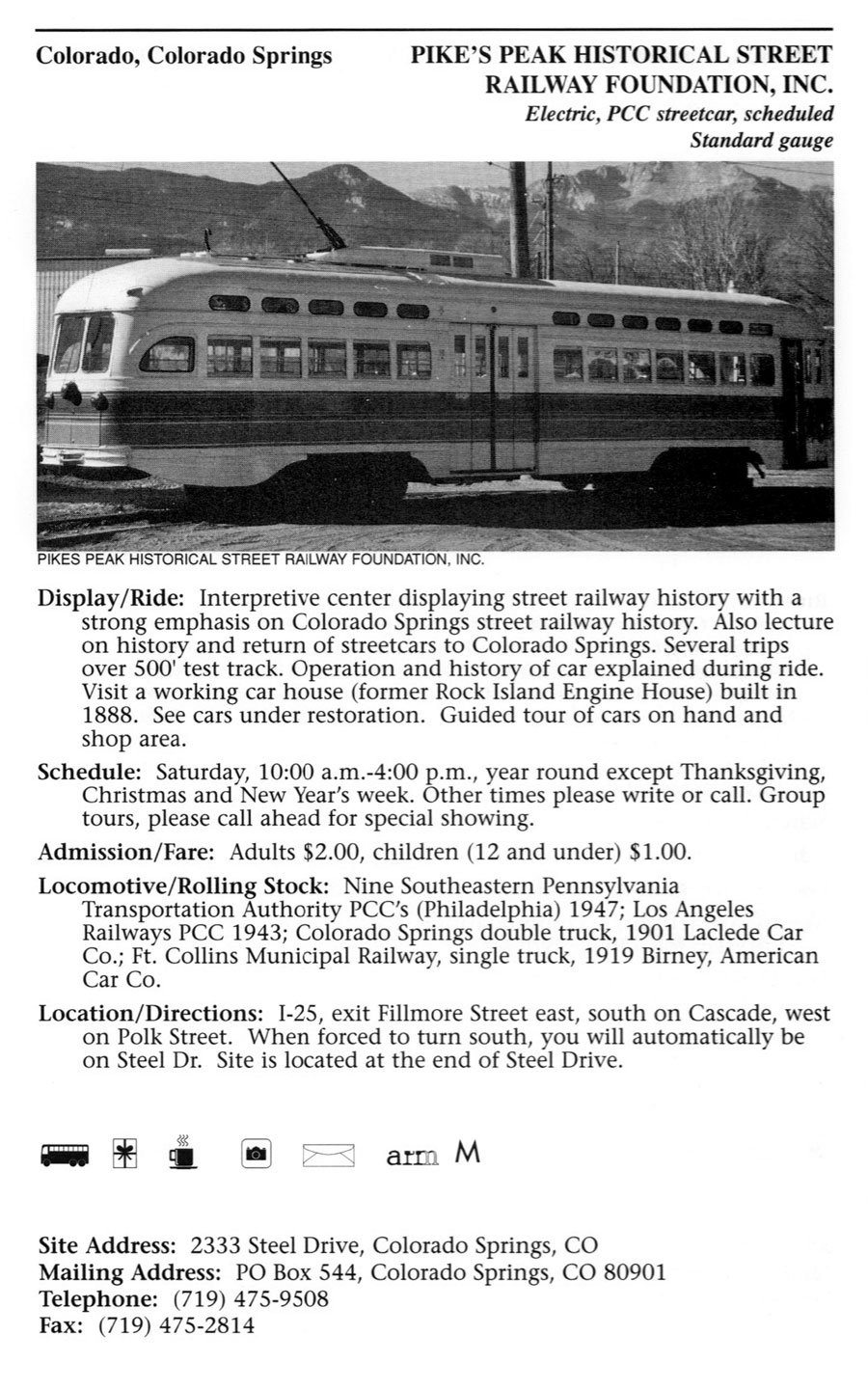
1998 tourist train guide ad / collection
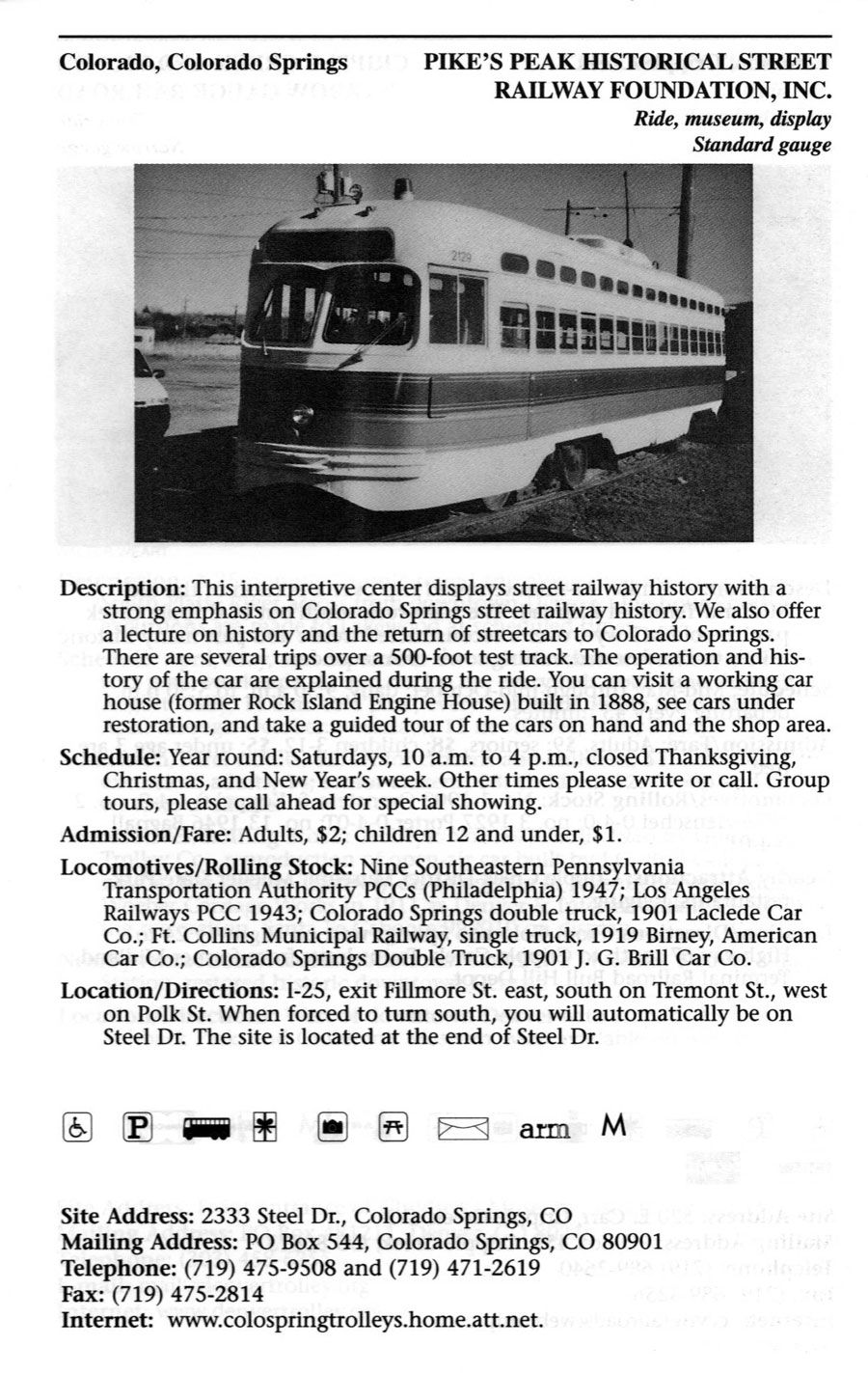
2001 tourist train guide ad / collection
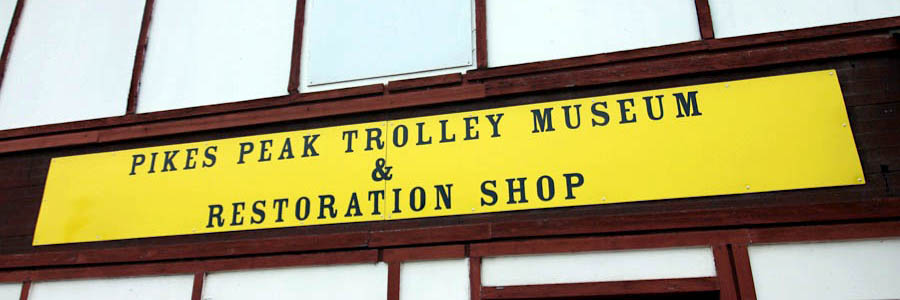
May 2023 / RWH
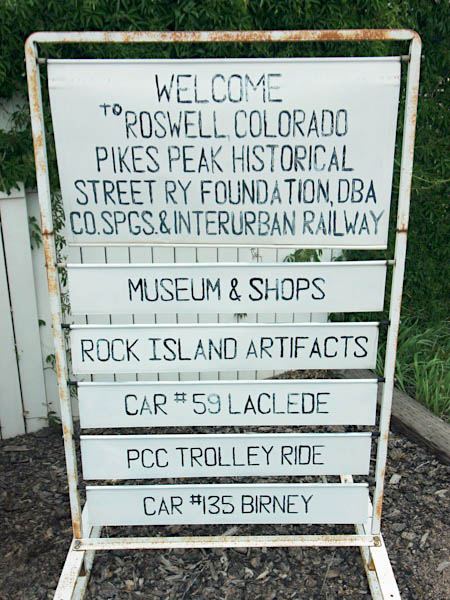
May 2023 / RWH
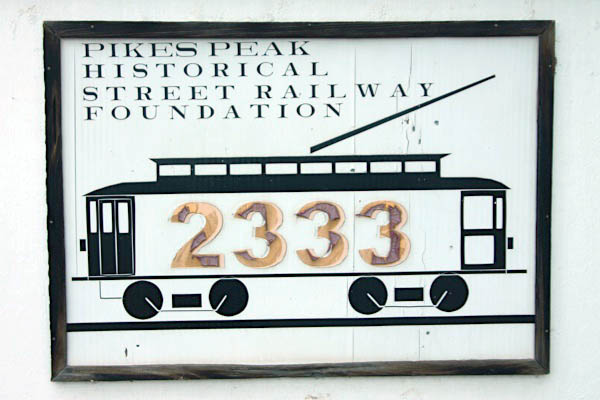
May 2023 / RWH
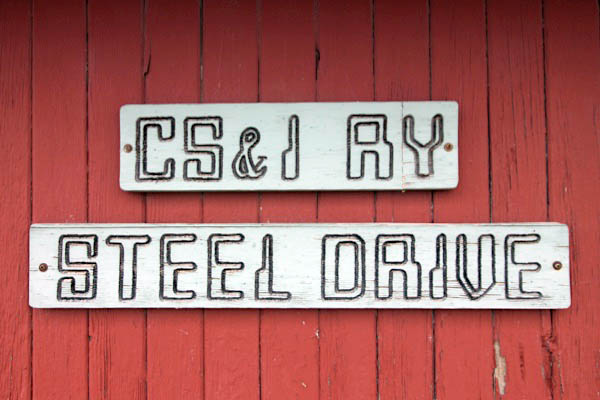
May 2023 / RWH
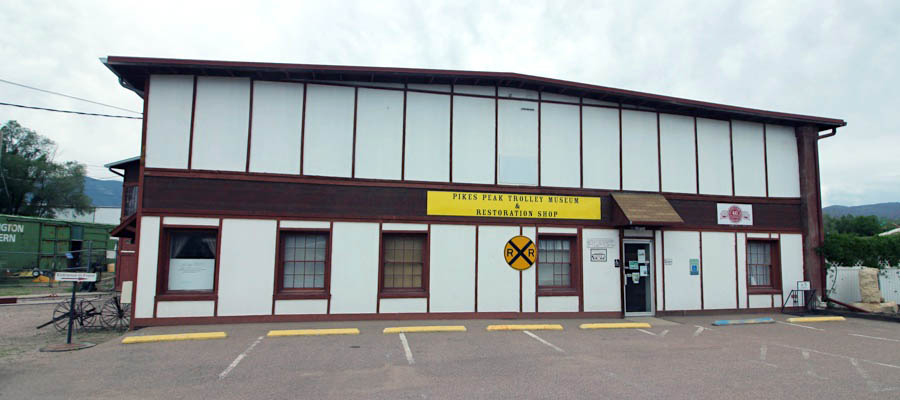
Colorado Springs, Co / May 2023 / RWH

Click to see the Pikes Peak Trolley Museum plotted on a Google Maps page

Colorado Springs, Co / May 2023 / RWH
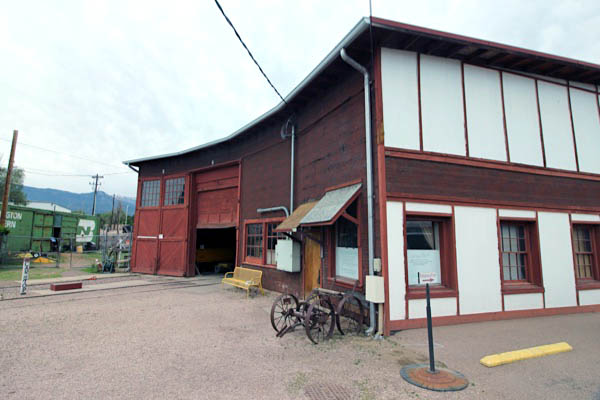
Colorado Springs, Co / May 2023 / RWH

May 2023 / RWH

Colorado Springs, Co / May 2023 / RWH

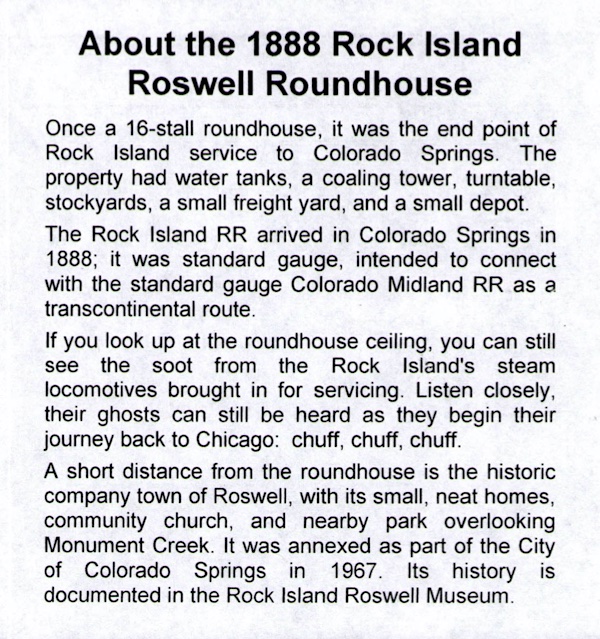
collection
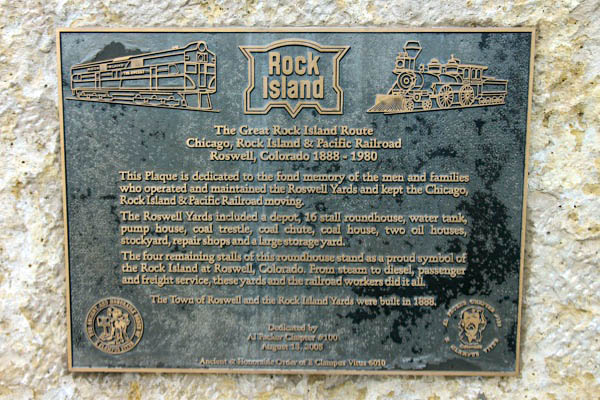
May 2023 / RWH
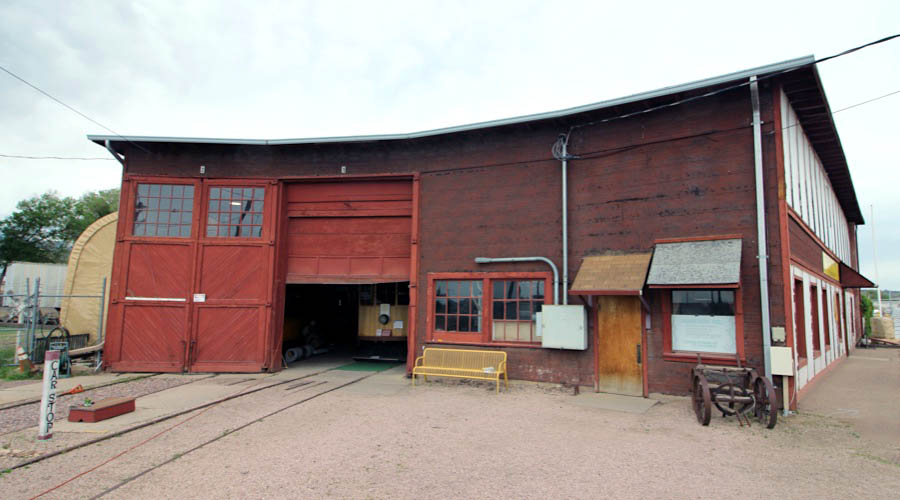
Colorado Springs, Co / May 2023 / RWH
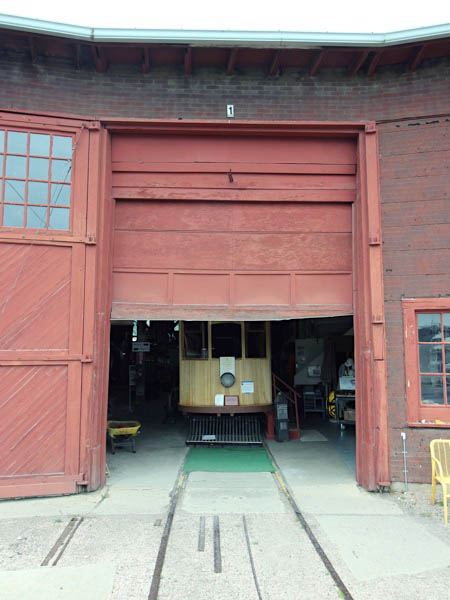
May 2023 / RWH
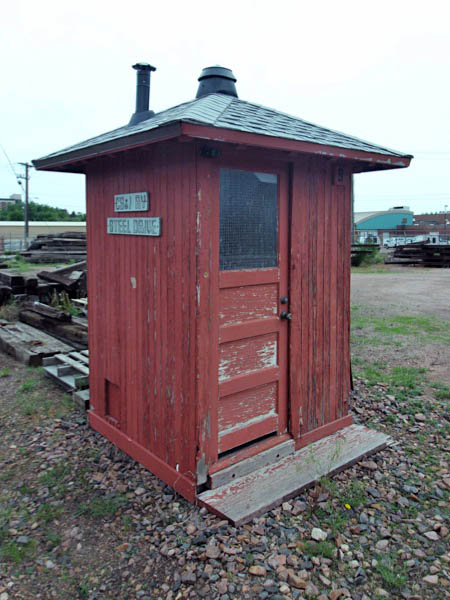
May 2023 / RWH
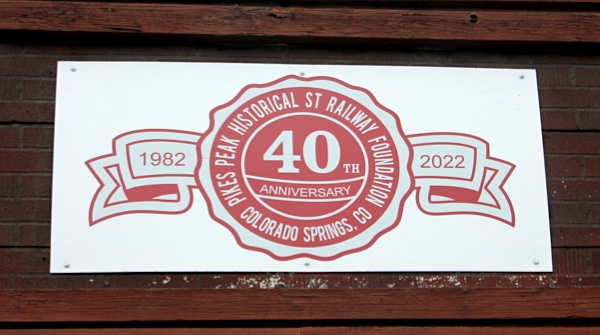
May 2023 / RWH

May 2023 / RWH
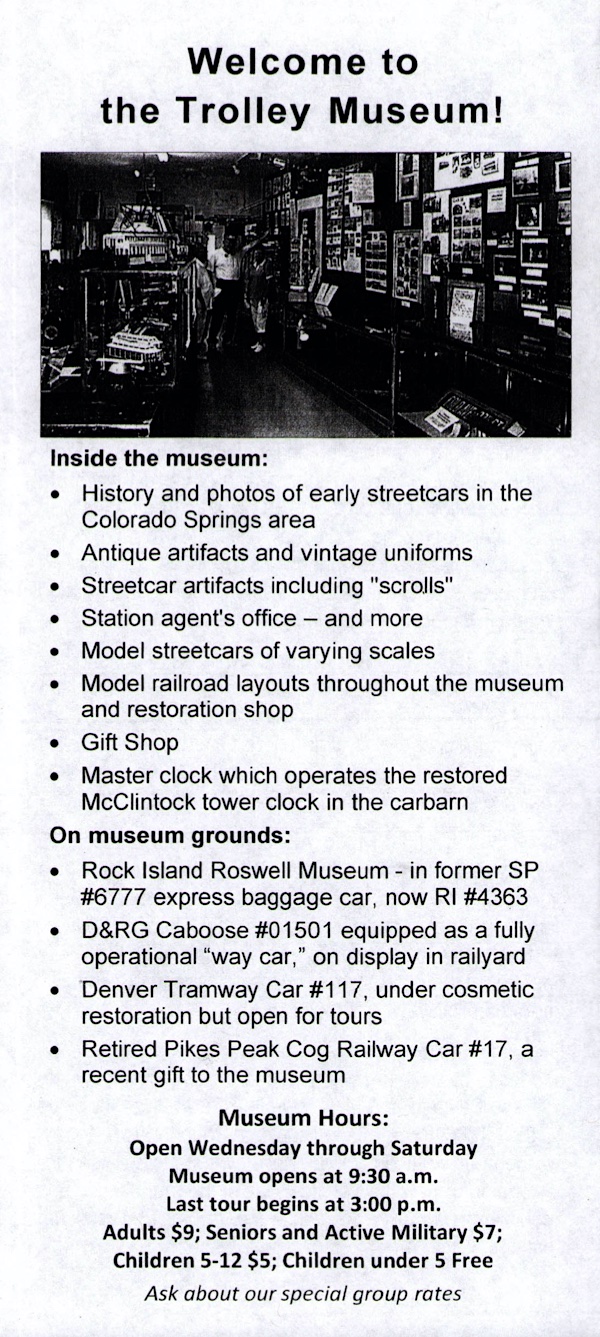
collection
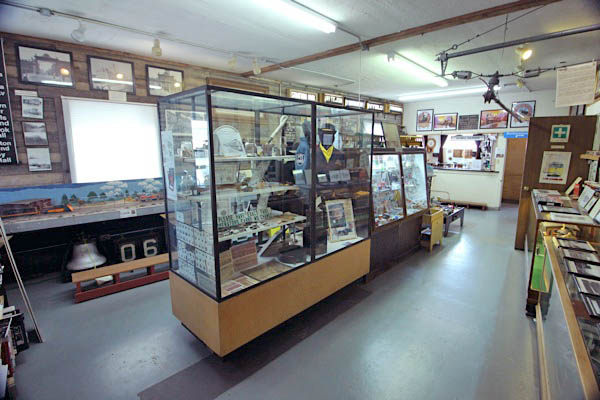
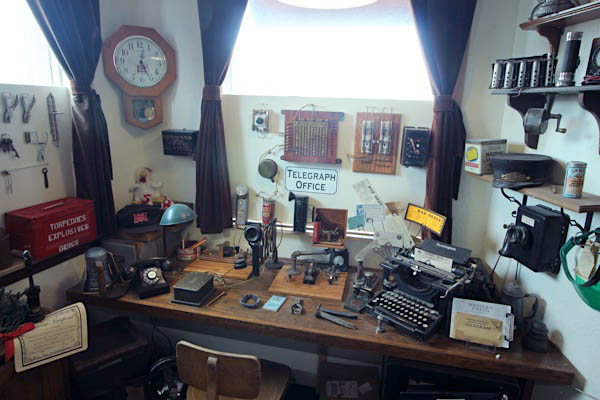
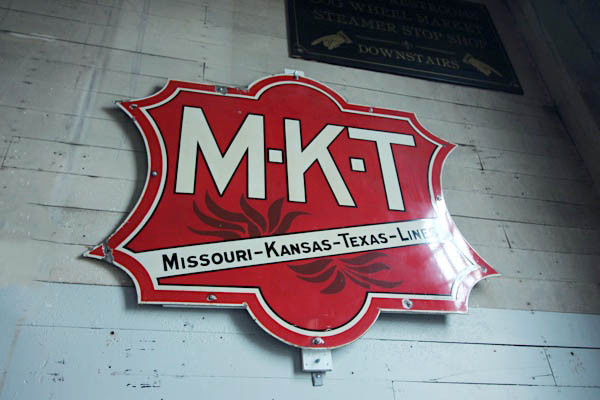
May 2023 / RWH


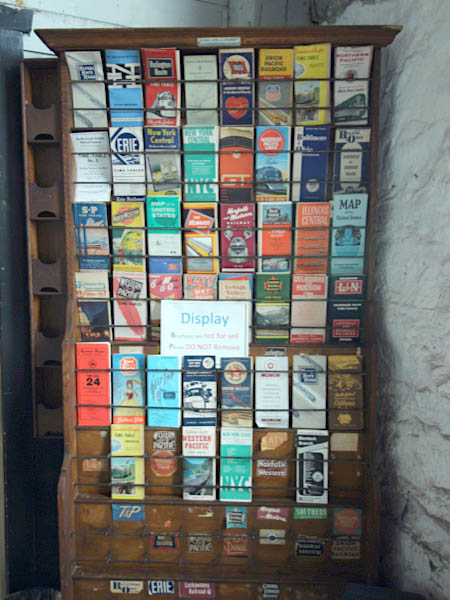
May 2023 / RWH
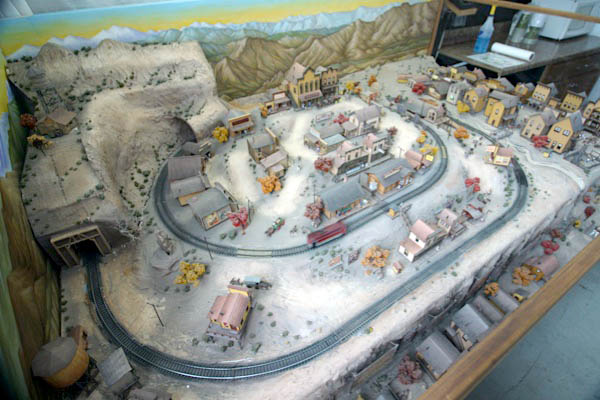
May 2023 / RWH
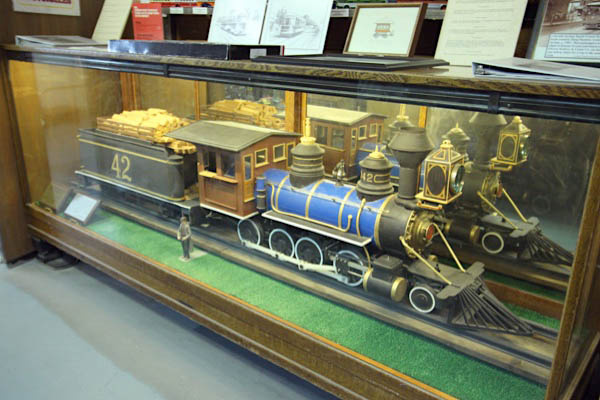
May 2023 / RWH
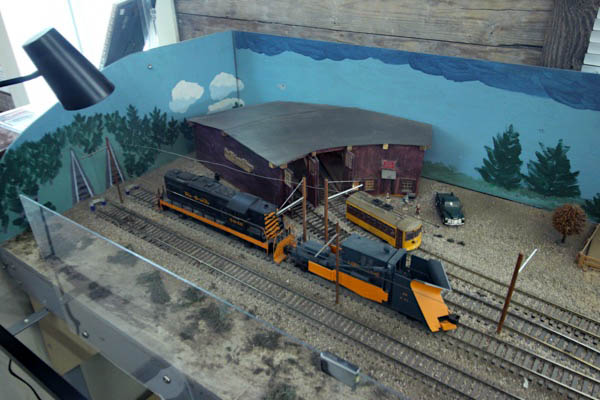
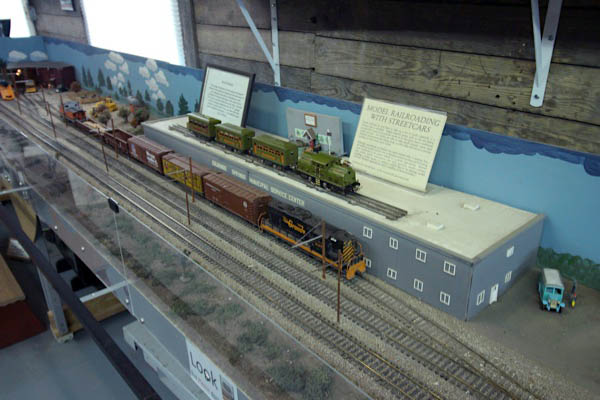
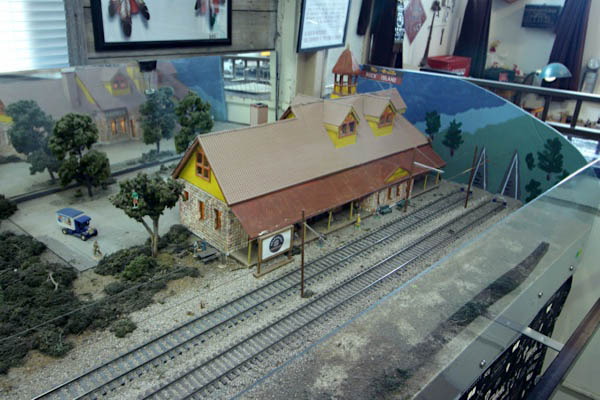
May 2023 / RWH

May 2023 / RWH
 Article
Article
A tale of trolleys at the heart of Colorado Springs
August 25, 2022
COLORADO SPRINGS — The Pikes Peak Trolley Museum and Restoration Shop has been working for 40 years to preserve our town's history while also restoring vintage trolleys with the hope that they can some day be returned to a rail system.
The museum, founded in part by John Haney who still gives tours of the facility, is situated inside of an 1880s roundhouse which is nearly as old as Colorado Springs, founded in 1871.
Located on the premises you'll find a number of classical streetcars, historical photos, interactive displays for all ages, and four trolleys that are currently undergoing restoration.
While the museum clearly has a firm focus on preserving our city's history, they also have their sights set on the future.
The hope is to return trolleys to major usage in Colorado Springs at large.
The foundation that operates the museum has made and continues to make moves towards those ends.
The museum is completely volunteer based and is always looking for additional hands to come and help out.
Jon McMichael / KOAA News 5 - Southern Colorado
Trolley Restoration

Colorado Springs & Interurban #48
Brill convertible streetcar (1901) / May 2023 / RWH
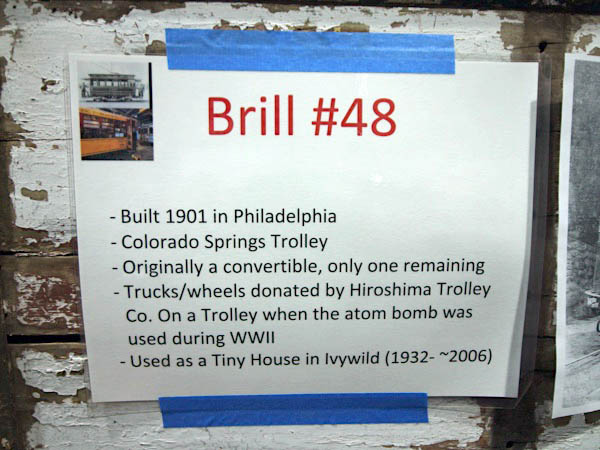
May 2023 / RWH

 Colorado Springs & Interurban #48 was part of an order for 5 convertible streetcars from the Brill company in 1901.
The cars were rebuilt in 1908-1909 to better survive the Colorado Springs climate. All of the cars remained with the company until it shut down in 1932. Number 48 was sold and turned into a house for the next 70 years before being purchased by the museum and moved to the car house. Car 48 is one of two surviving CS&I cars, both at the museum and the only surviving Brill convertible.
Colorado Springs & Interurban #48 was part of an order for 5 convertible streetcars from the Brill company in 1901.
The cars were rebuilt in 1908-1909 to better survive the Colorado Springs climate. All of the cars remained with the company until it shut down in 1932. Number 48 was sold and turned into a house for the next 70 years before being purchased by the museum and moved to the car house. Car 48 is one of two surviving CS&I cars, both at the museum and the only surviving Brill convertible.

collection
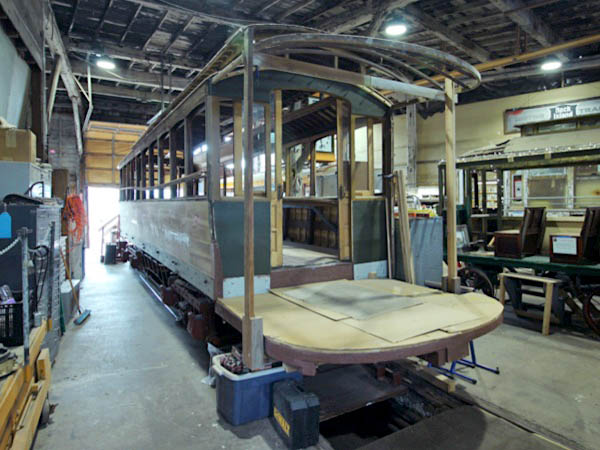
Colorado Springs & Interurban #59
LaClede Car Company streetcar (1901) / May 2023 / RWH
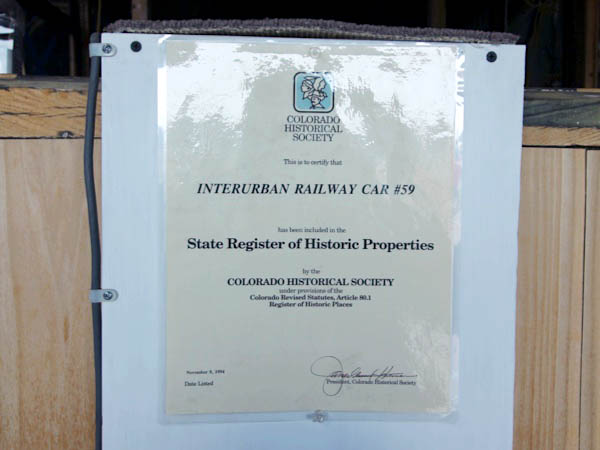
May 2023 / RWH
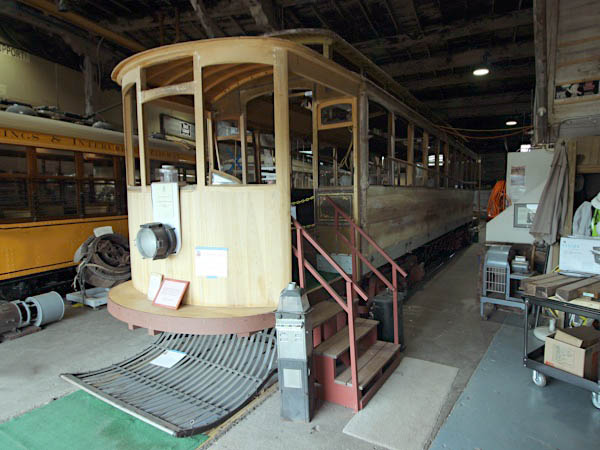
May 2023 / RWH
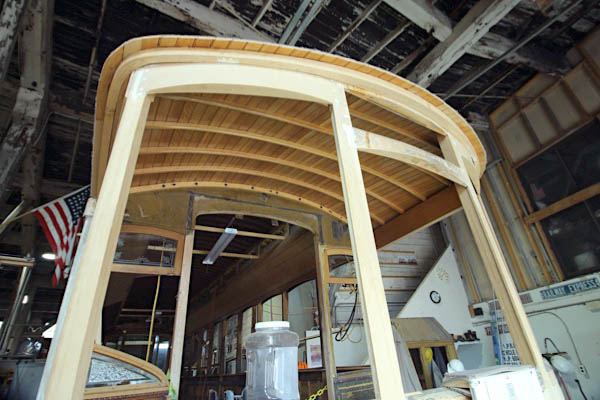
May 2023 / RWH

 Built in 1901 by the LaClede Car Company of St Louis, Missouri for the Colorado Springs and Interurban as their #59. One of two remaining original CS&I cars this was the first car in the Museum collection. The car was moved inside for storage and eventual start of restoration with the leasing of the original 1888 Rock Island roundhouse.
Built in 1901 by the LaClede Car Company of St Louis, Missouri for the Colorado Springs and Interurban as their #59. One of two remaining original CS&I cars this was the first car in the Museum collection. The car was moved inside for storage and eventual start of restoration with the leasing of the original 1888 Rock Island roundhouse.
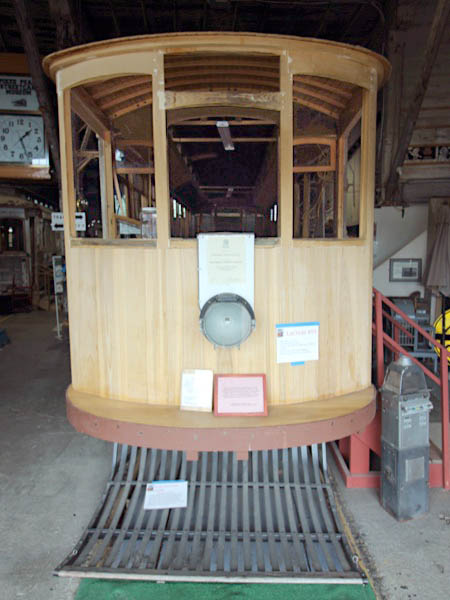
May 2023 / RWH
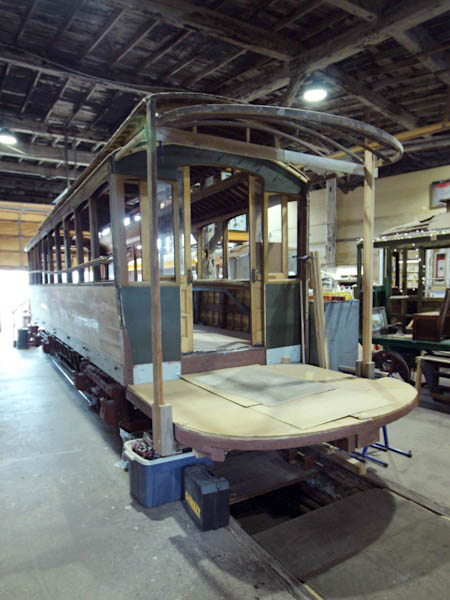
May 2023 / RWH
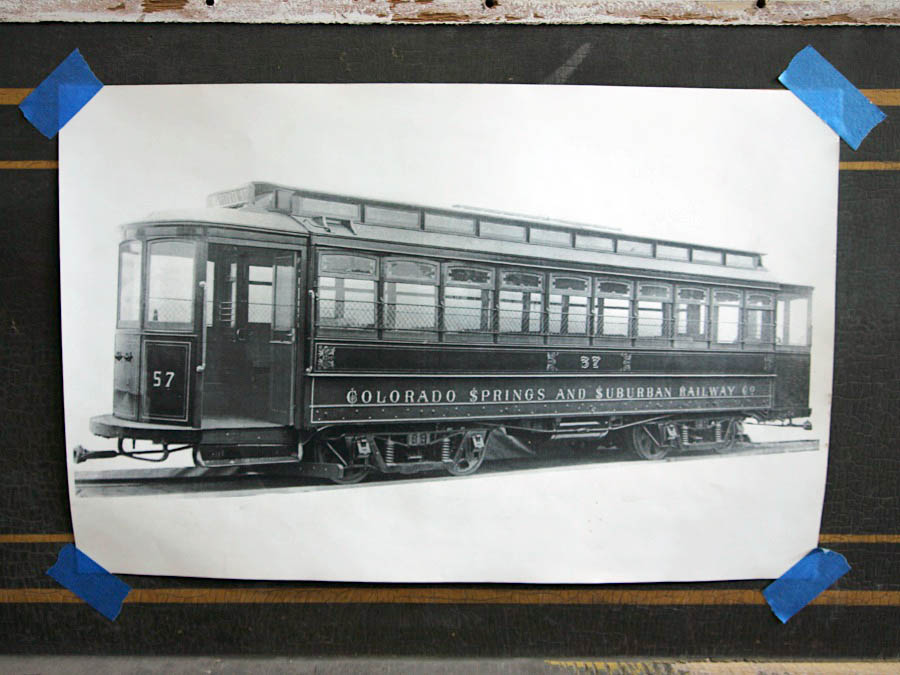
May 2023 / RWH
 Birney Safety Car
Birney Safety Car

Colorado Springs & Interurban #135
American Car Co. Birney safety car (1919) / May 2023 / RWH
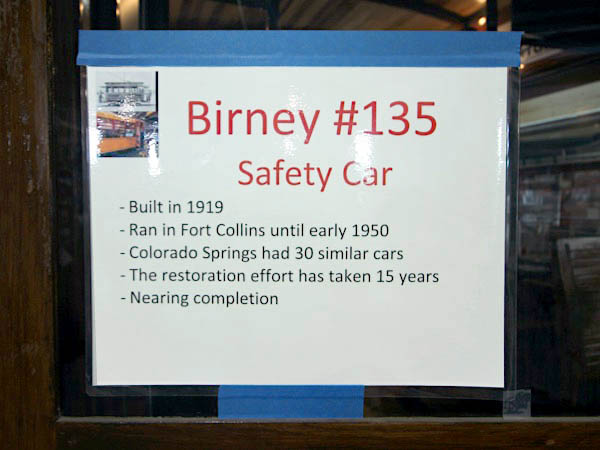
May 2023 / RWH

this streetcar also posted in Colorado Railroad Museum
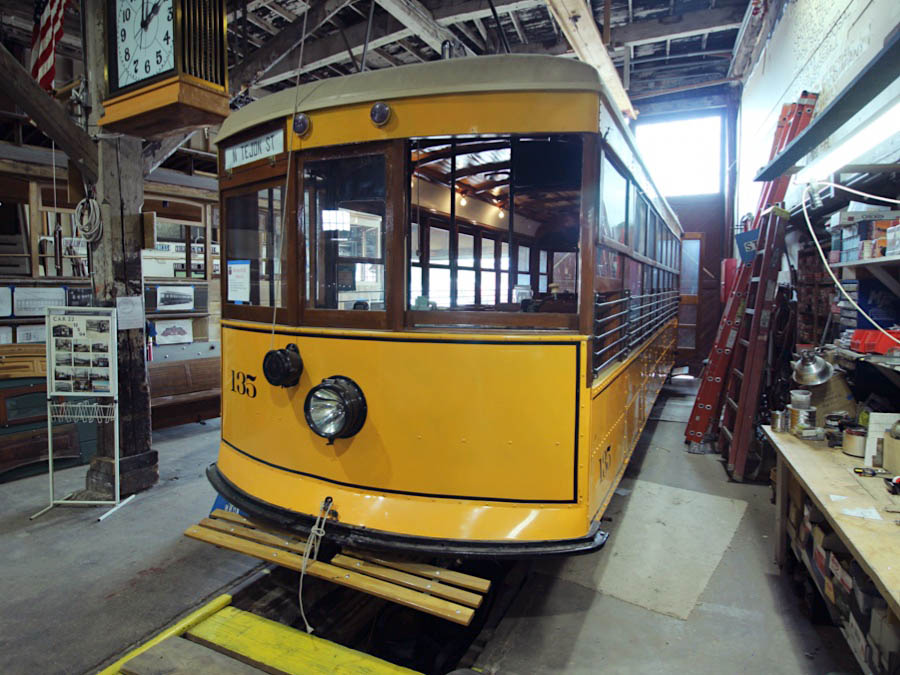
May 2023 / RWH

May 2023 / RWH

 Built by American Car Company of St Louis Missouri in 1919 and delivered to Fort Collins Municipal Railway as Car 22. Fort Collins stopped streetcar service in 1951, it was the last city to operate Birney Safety cars. The Rocky Mountain Railroad Club purchased the car in 1952 and moved it for display at the Golden Colorado Museum. In 1994 Pikes Peak Historical Street Railway signed a long term lease for two streetcars, Birney #22 was one of them. The cars arrived at the Roswell Carhouse in December of that year and restoration started soon after. In July 2006 the foundation was able to negotiate the purchase of both streetcars from the railroad club.
Built by American Car Company of St Louis Missouri in 1919 and delivered to Fort Collins Municipal Railway as Car 22. Fort Collins stopped streetcar service in 1951, it was the last city to operate Birney Safety cars. The Rocky Mountain Railroad Club purchased the car in 1952 and moved it for display at the Golden Colorado Museum. In 1994 Pikes Peak Historical Street Railway signed a long term lease for two streetcars, Birney #22 was one of them. The cars arrived at the Roswell Carhouse in December of that year and restoration started soon after. In July 2006 the foundation was able to negotiate the purchase of both streetcars from the railroad club.
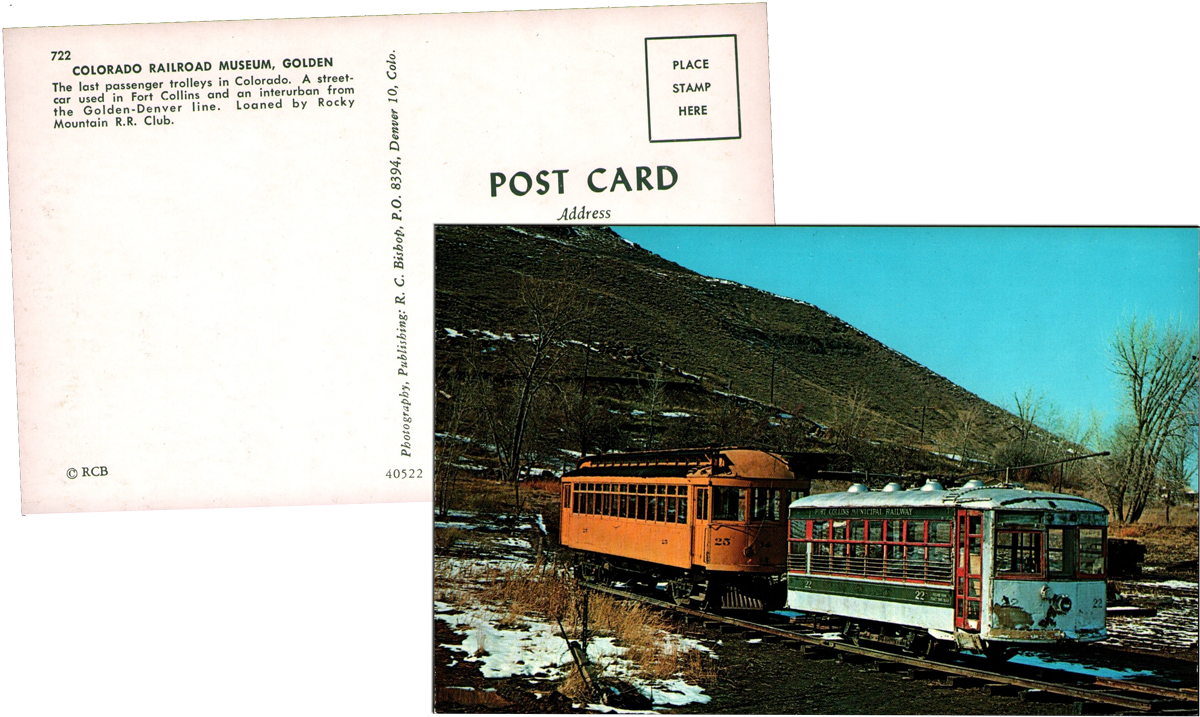
postcard / collection
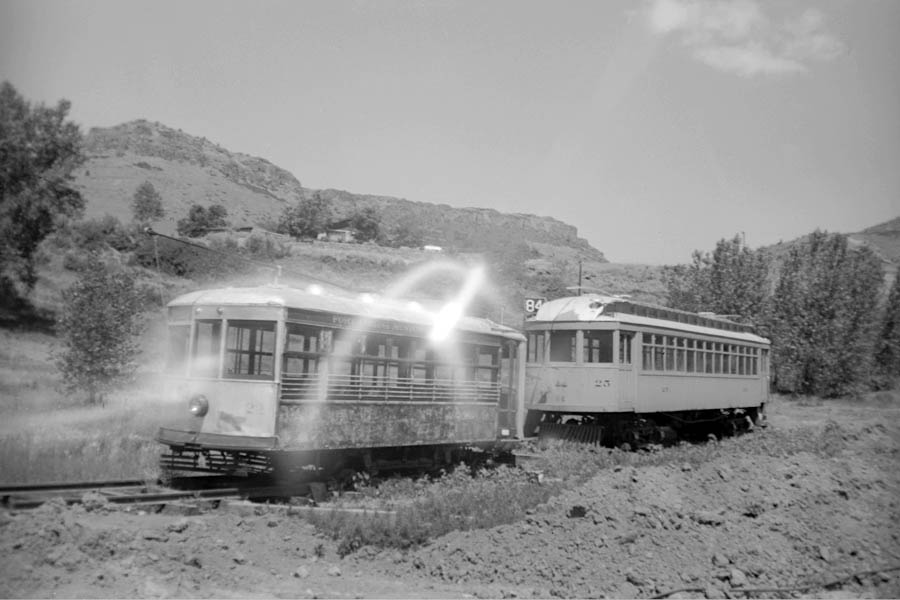
Golden, Co / Jun 1959 / JCH

See also our complete Colorado Railroad Museum featured scrapbook in Preservation

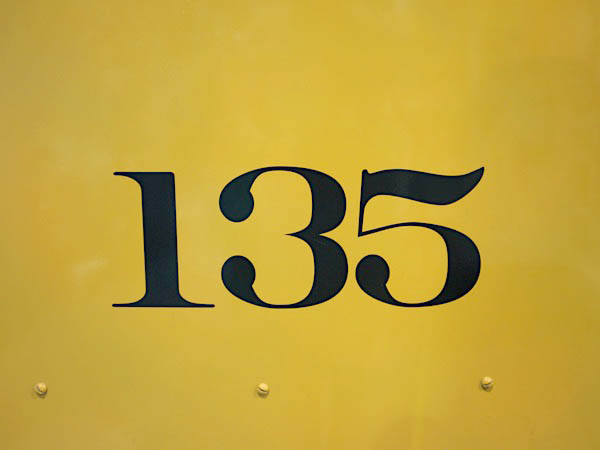
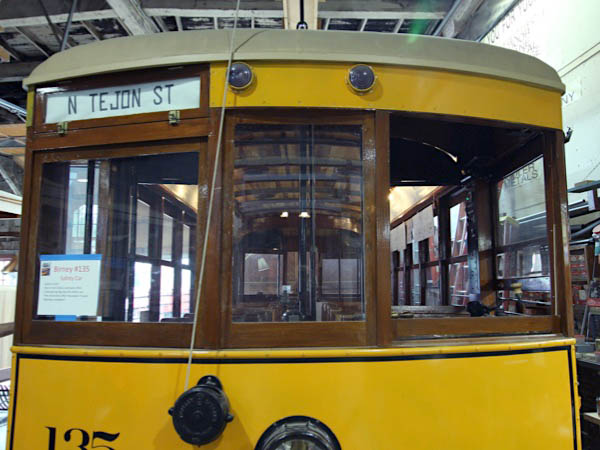
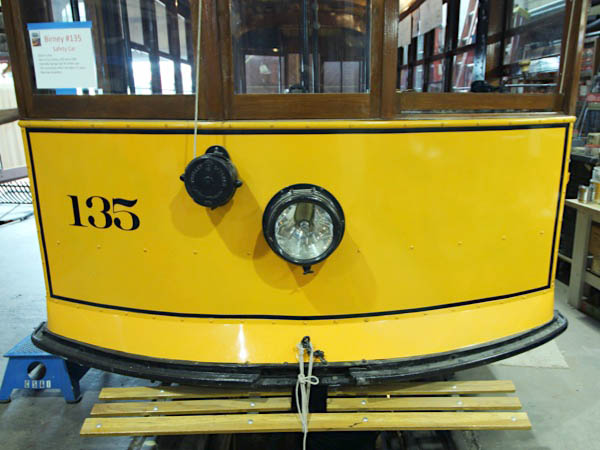
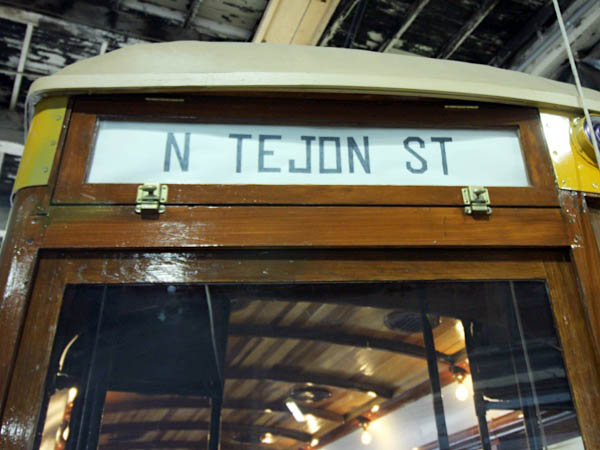
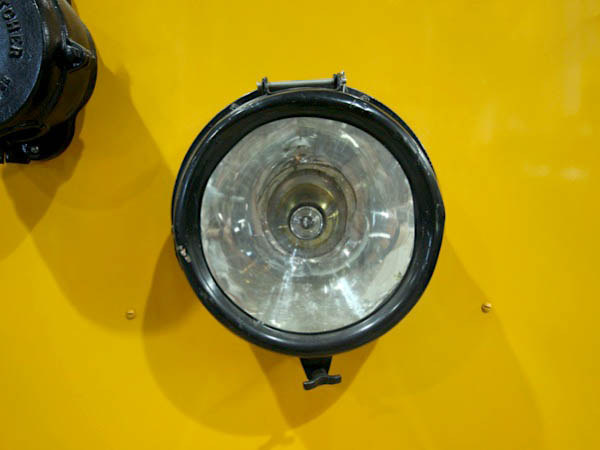
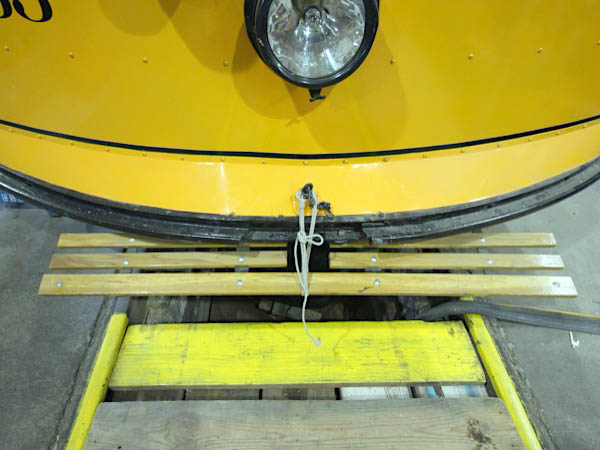
May 2023 / RWH
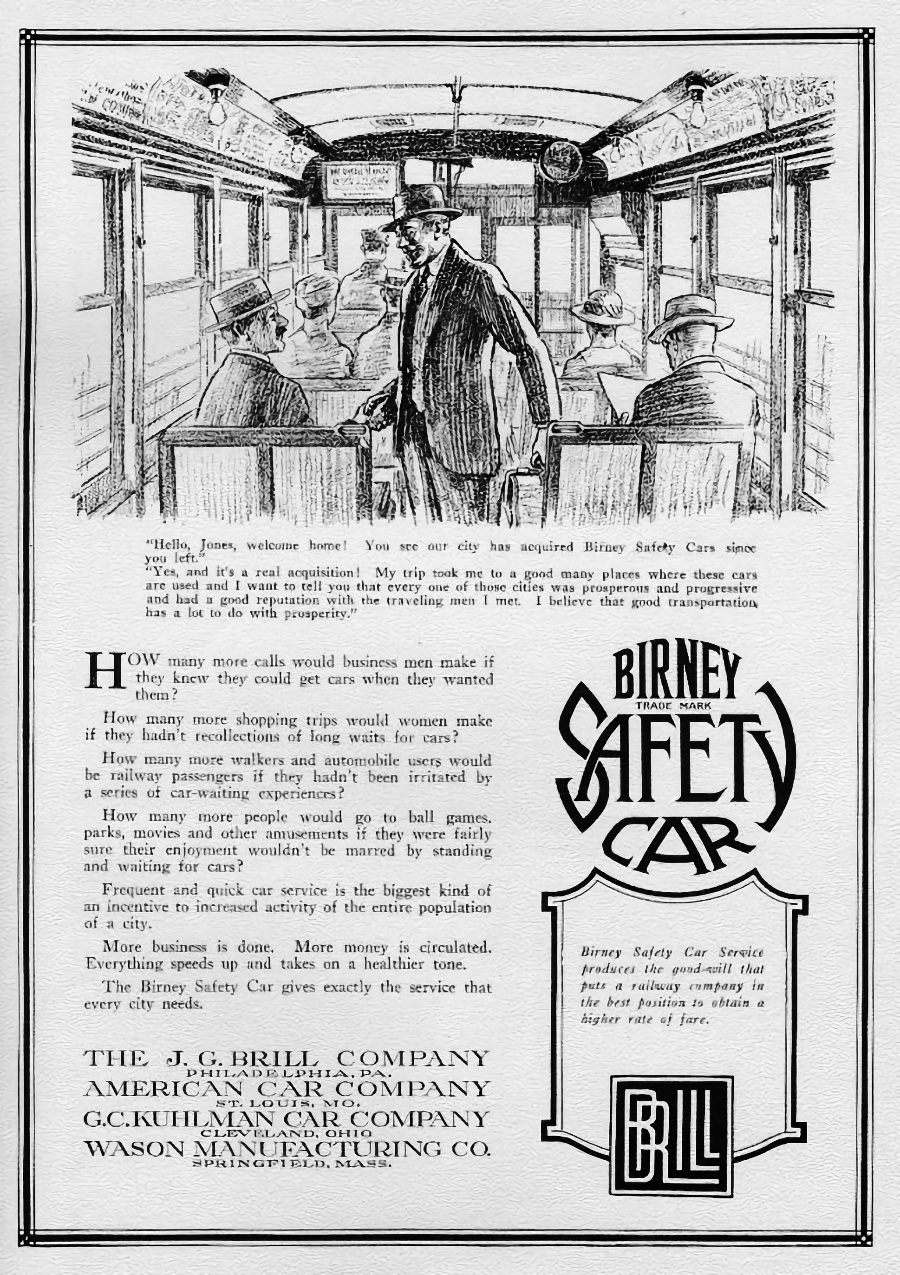
collection
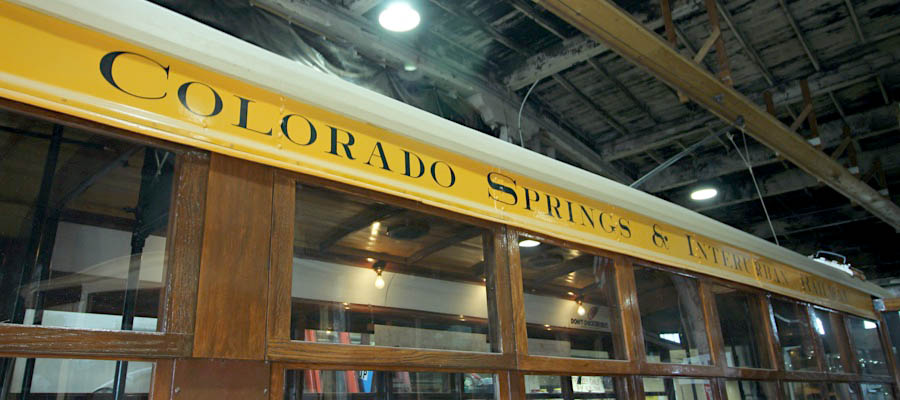
May 2023 / RWH
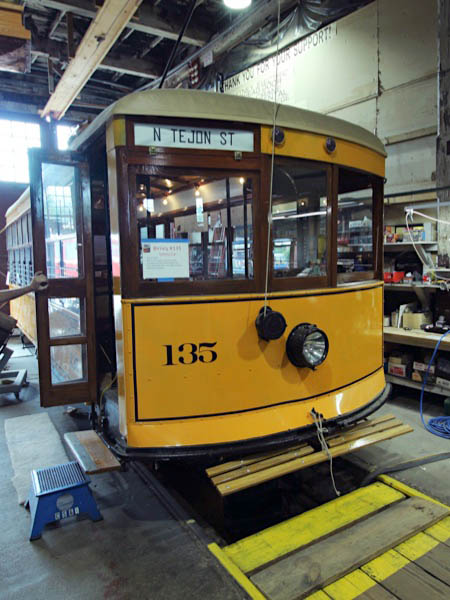
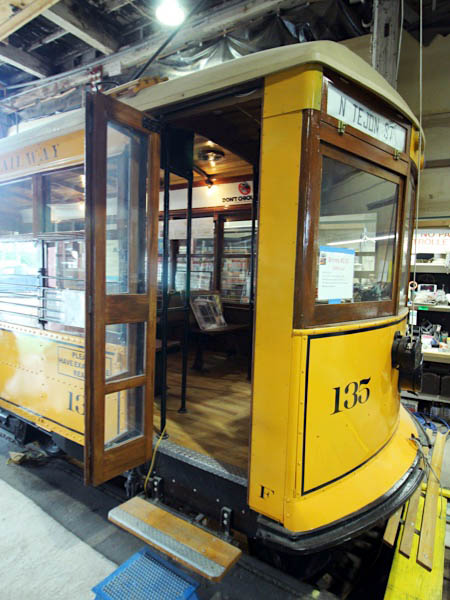
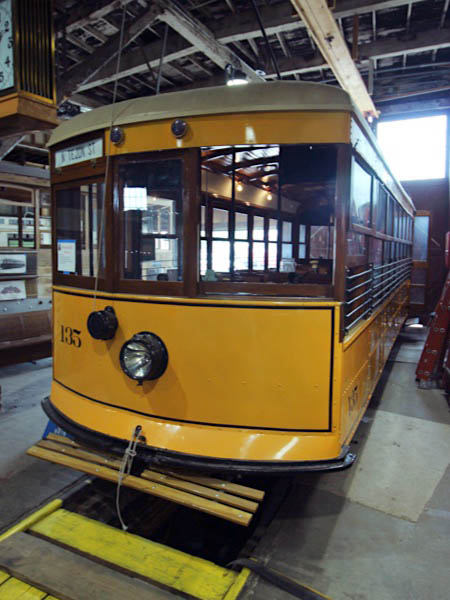
May 2023 / RWH
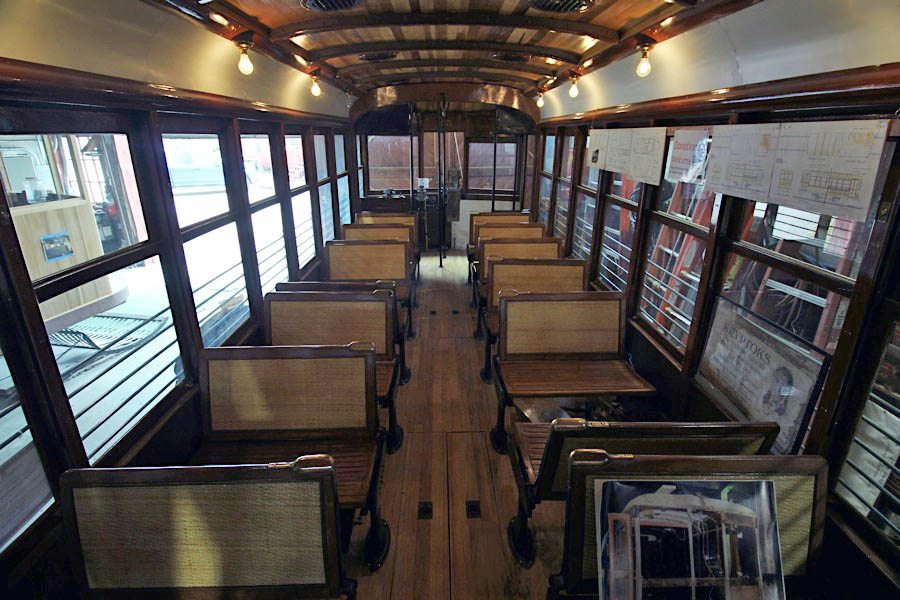
May 2023 / RWH
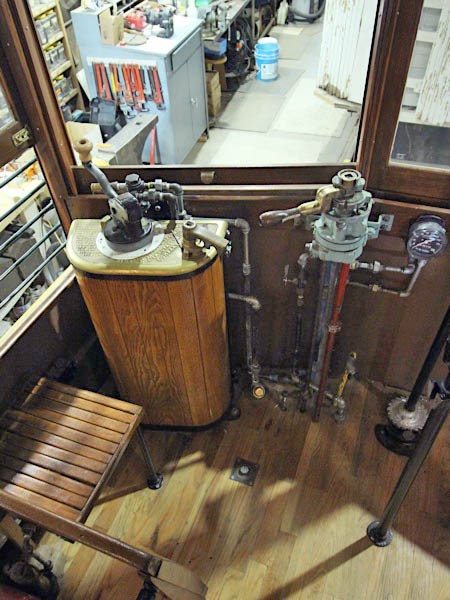
May 2023 / RWH
PCC cars
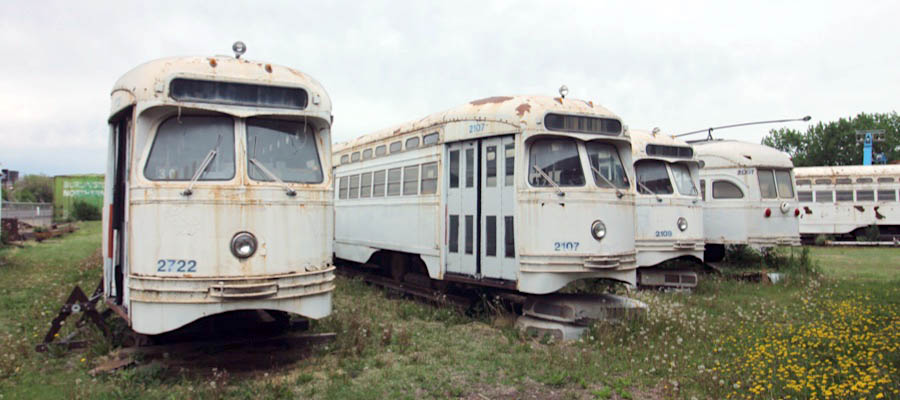
Colorado Springs, Co / May 2023 / RWH
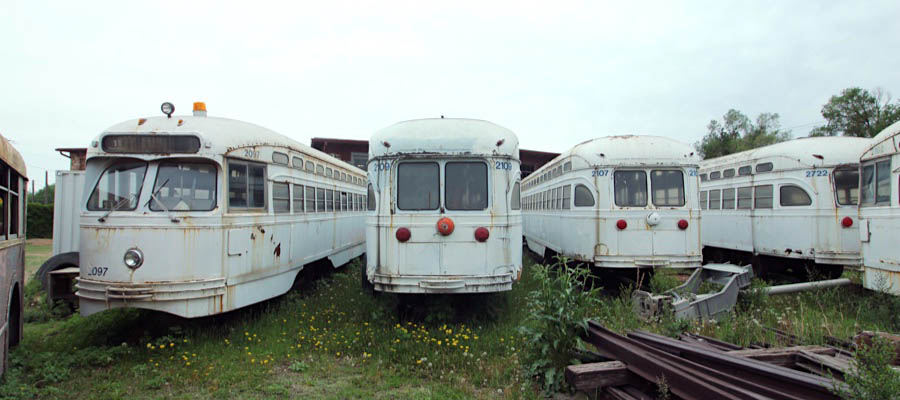
Colorado Springs, Co / May 2023 / RWH

The PCC (Presidents' Conference Committee) is a tram design that was first built in the United States in the 1930s. The design proved successful domestically, and after World War II it was licensed for use elsewhere in the world where PCC based cars were made. The PCC car has proved to be a long-lasting icon of streetcar design, and many remain in service around the world.
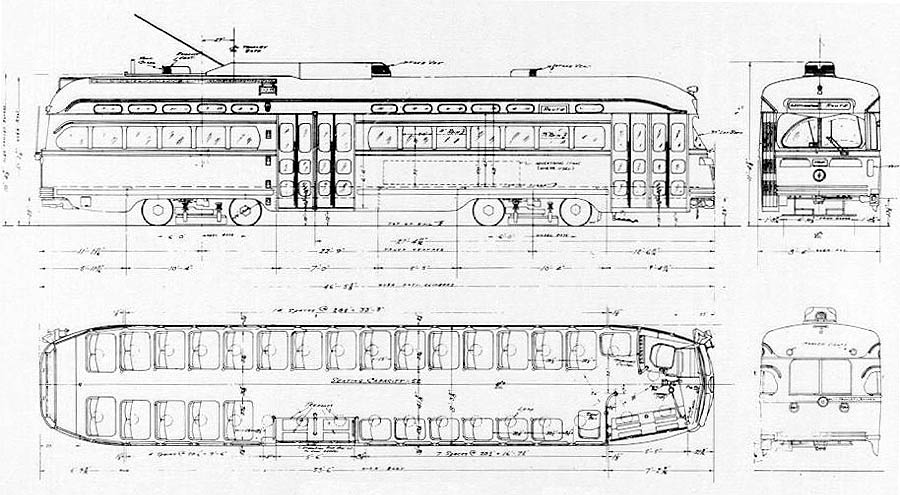 The "PCC" ("Presidents' Conference Committee") originated from the design committee formed in 1929. It was renamed the "Electric Railway Presidents' Conference Committee" (ERPCC) in 1931. The group's membership consisted primarily of representatives of several large operators of U.S. urban electric street railways plus potential manufacturers. Three interurban lines and at least one "heavy rail", or rapid transit, operator—Chicago Rapid Transit Company—were represented as well. Also included on the membership roll were manufacturers of surface cars (streetcars) and interested component suppliers.
The "PCC" ("Presidents' Conference Committee") originated from the design committee formed in 1929. It was renamed the "Electric Railway Presidents' Conference Committee" (ERPCC) in 1931. The group's membership consisted primarily of representatives of several large operators of U.S. urban electric street railways plus potential manufacturers. Three interurban lines and at least one "heavy rail", or rapid transit, operator—Chicago Rapid Transit Company—were represented as well. Also included on the membership roll were manufacturers of surface cars (streetcars) and interested component suppliers.
ERPCC's goal was to design a streamlined, comfortable, quiet, and fast accelerating and braking streetcar that would be operated by a seated operator using floor mounted pedal controls to better meet the needs of the street railways and appeal to riders. ERPCC prepared a detailed research plan, conducted extensive research on streetcar design, built and tested components, made necessary modifications and revisions based upon the findings, and ultimately produced a set of specifications for a standardized and fixed design. It included a modest list of available options with ample room for customer customization but was to be built with standard parts as opposed to a custom designed car body with diverse parts added depending on the whims and requirements of the individual customer. Numerous national and international users operated large fleets of PCC cars for many years.
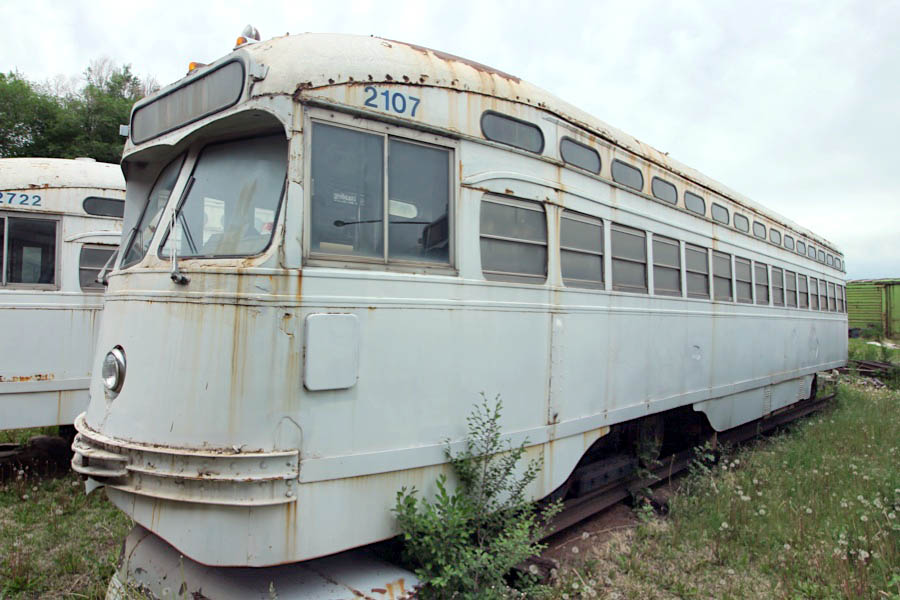
Philadephia SEPTA #2107
Colorado Springs, Co / May 2023 / RWH
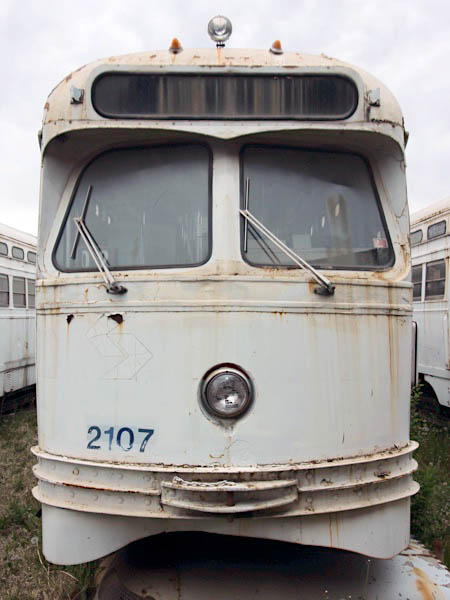
May 2023 / RWH
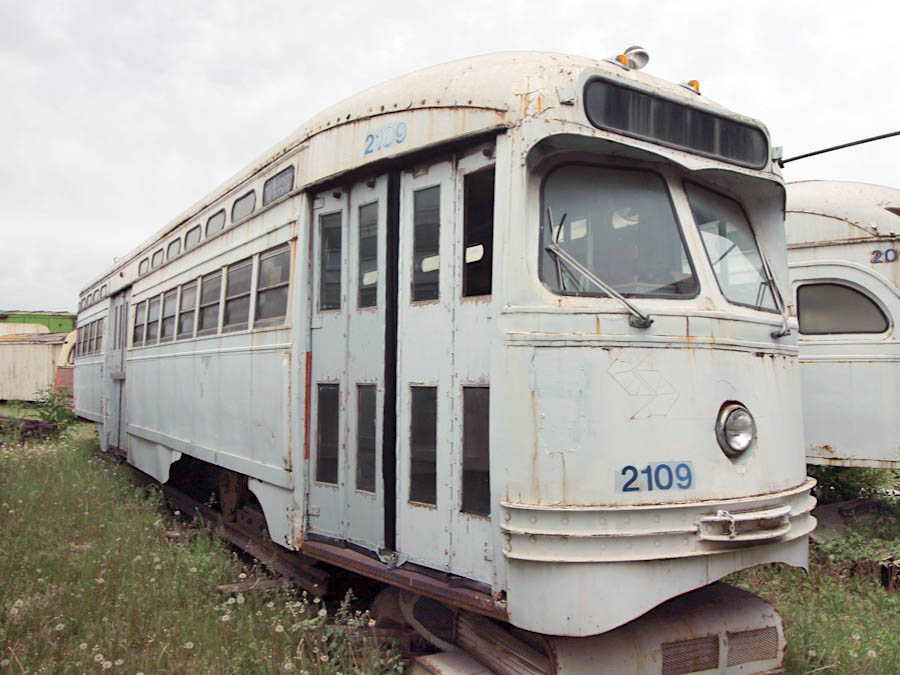
Philadephia SEPTA #2109
Colorado Springs, Co / May 2023 / RWH
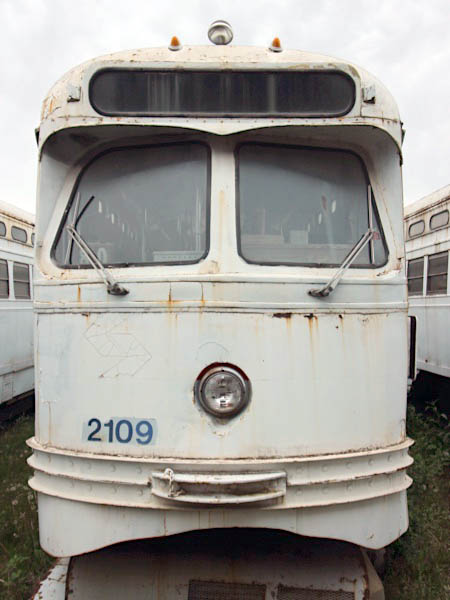
May 2023 / RWH

Philadephia SEPTA #2722
Colorado Springs, Co / May 2023 / RWH
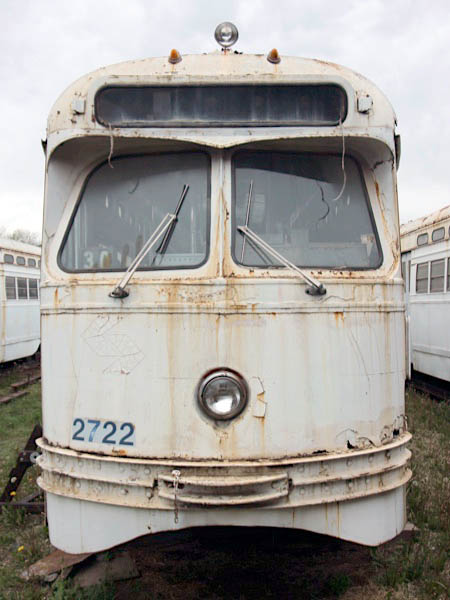
May 2023 / RWH
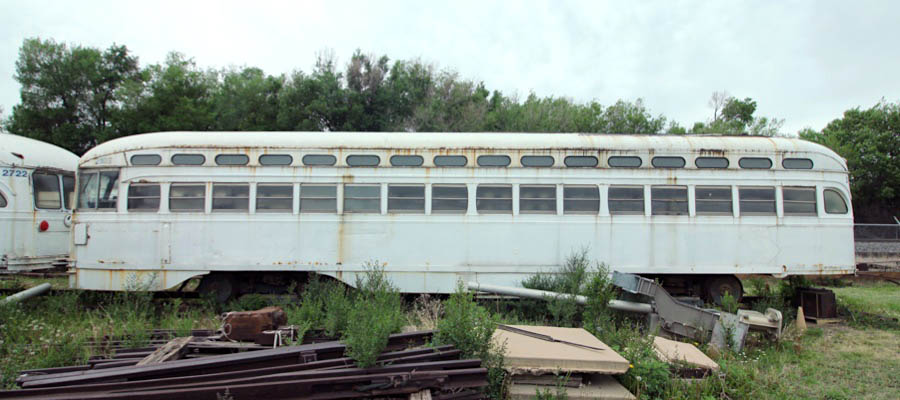
Philadephia SEPTA #2102
Colorado Springs, Co / May 2023 / RWH
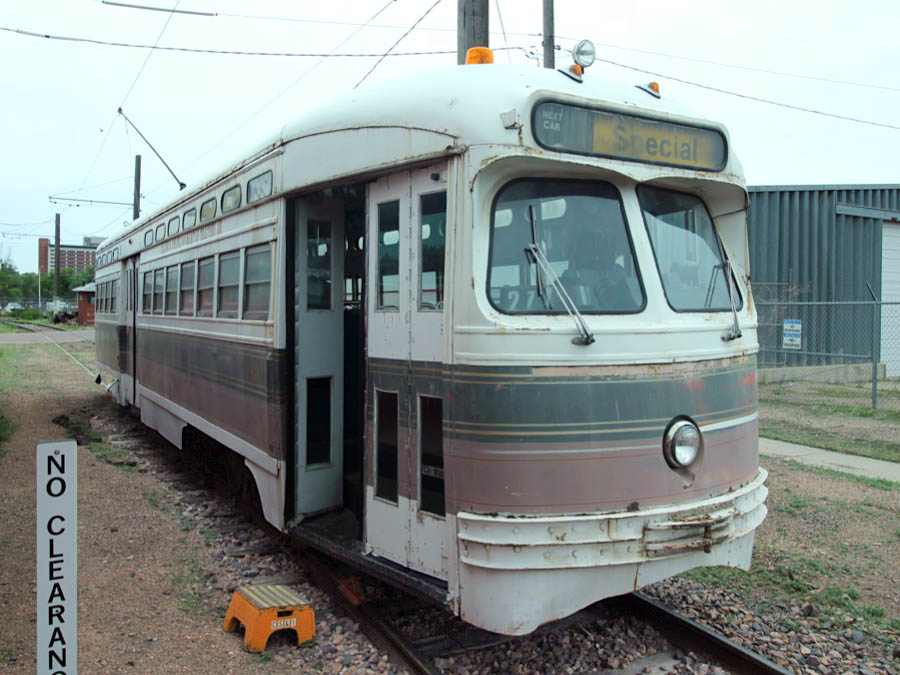
Colorado Springs & Manitou Traction #2129
Colorado Springs, Co / May 2023 / RWH
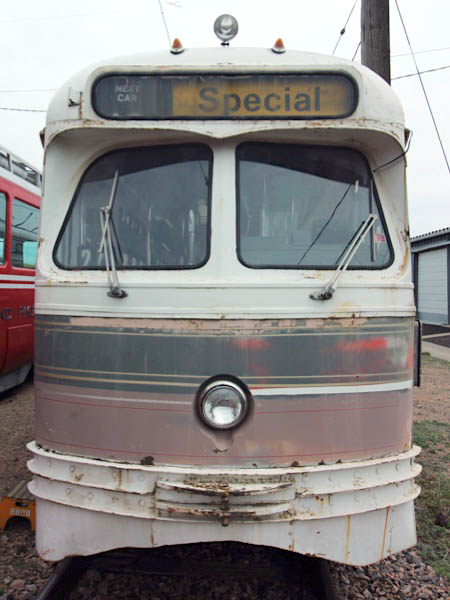
May 2023 / RWH
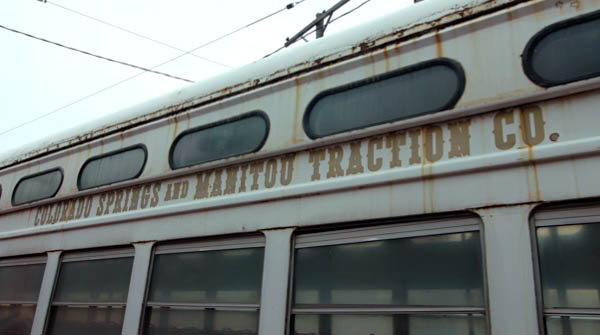
May 2023 / RWH
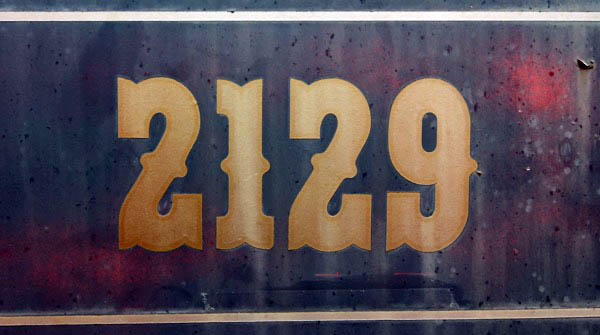
May 2023 / RWH
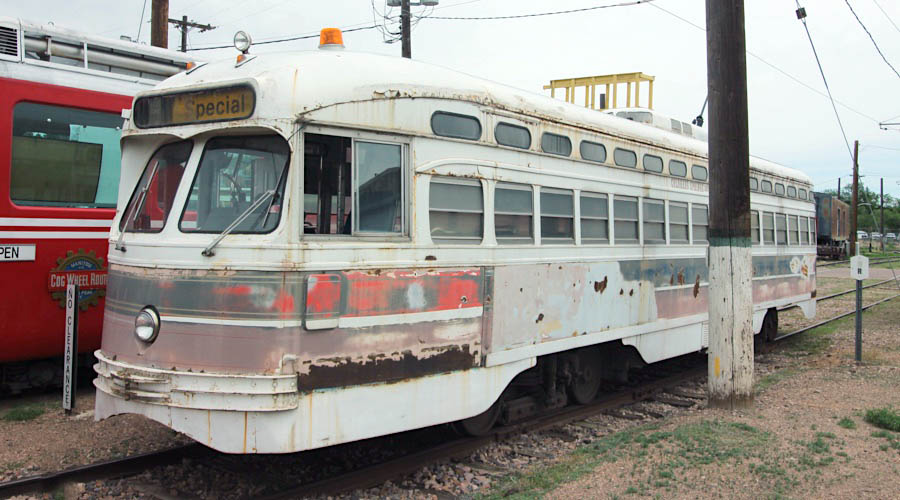
Colorado Springs, Co / May 2023 / RWH
 Los Angeles PCC
Los Angeles PCC
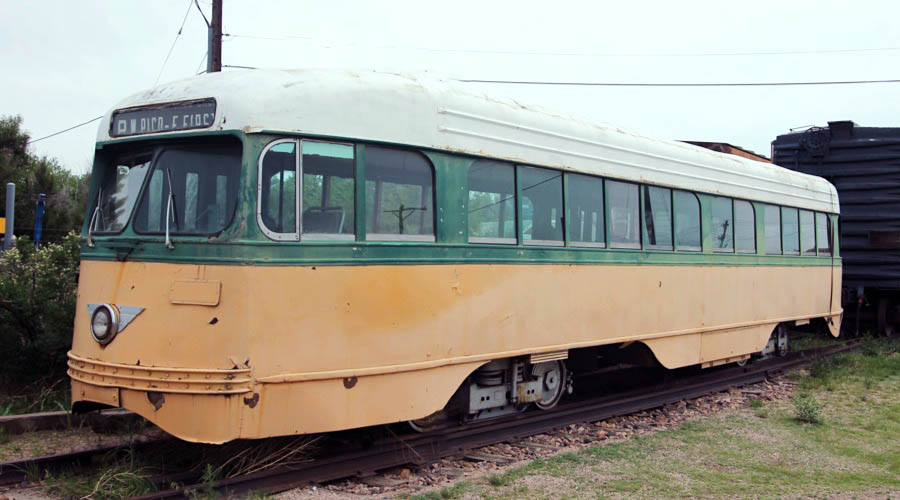
Los Angeles Railway #3101
Colorado Springs, Co / May 2023 / RWH
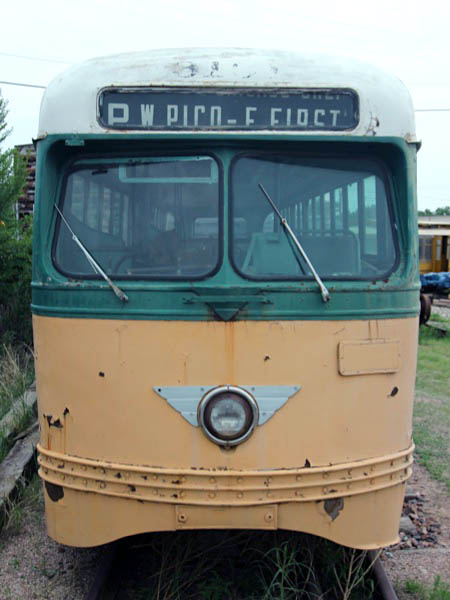
May 2023 / RWH

This car was built in 1943 for the Los Angeles Railway and after it was retired from that line it was moved to Cripple Creek, CO. It ran there for a short time on a tourist operation with about 900 feet of track. The car was then moved to the Colorado Railroad Museum where it resided until being leased to the Pike's Peak Historical Street Railway Foundation who will restore it to operation. The Pikes Peak Historical Street Railway Foundation purchased the car from the club in July of 2006. The car was built to the same gauge (3' 6") as Denver Tramway but the Tramway never operated any PCCs. An offer was made by the St. Louis Car Company to "loan" Denver a PCC for testing but the Tramway company refused.
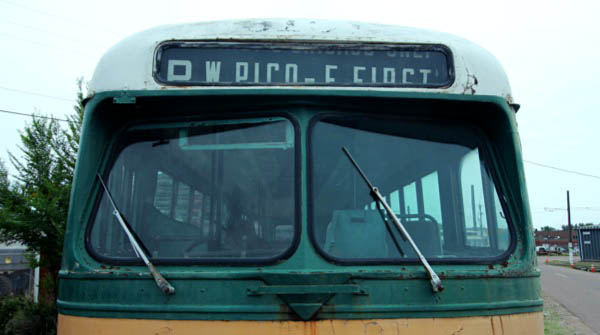
May 2023 / RWH
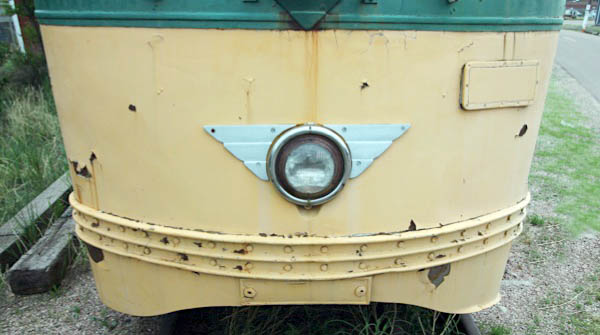
May 2023 / RWH
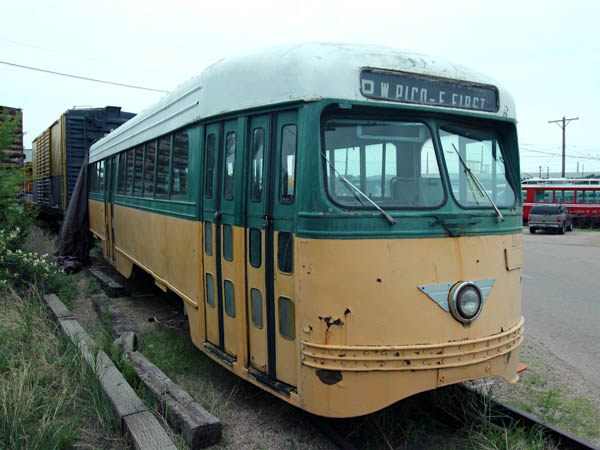
Colorado Springs, Co / May 2023 / RWH
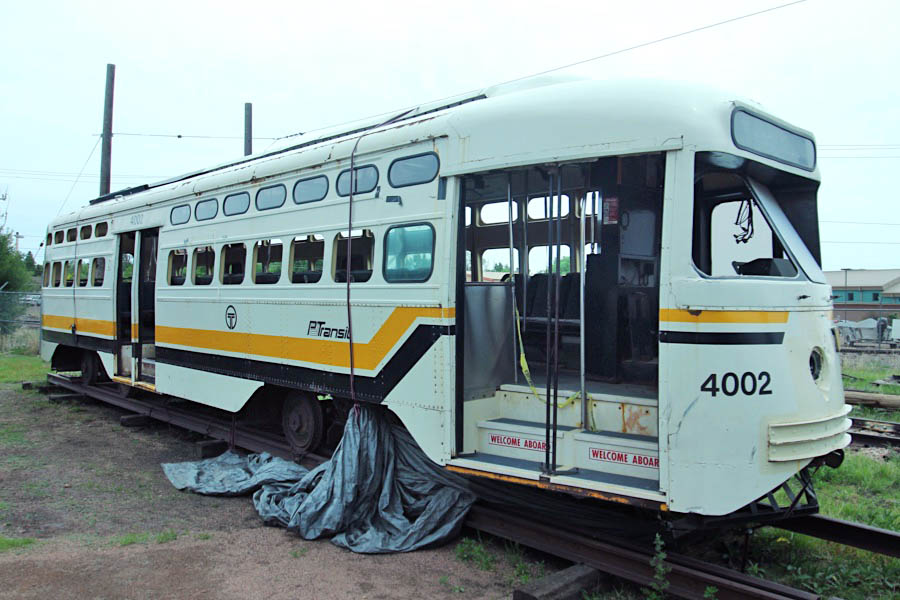
Pittsburgh #4002
Colorado Springs, Co / May 2023 / RWH

See also our complete Pittsburgh Pennsylvania transit scrapbook in Streetcars
 Cog "Aspen"
Cog "Aspen"

Manitou & Pikes Peak Cog #17 "Aspen"
Colorado Springs, Co / May 2023 / RWH
Manitou & Pikes Peak Cog #17 is a diesel-electric cog railcar built in 1968 by the Swiss Locomotive & Machine Works. Designated model Bhm 2/4, the car carried 78 passengers and featured operating stations at both ends. It was powered by a Cummin 855 prime mover. Replaced by two-car transets from the same builder, after retirement this car was donated to the Pikes Peak Trolley Museum.

this railcar also posted in Pikes Peak Cog Railway Survivors
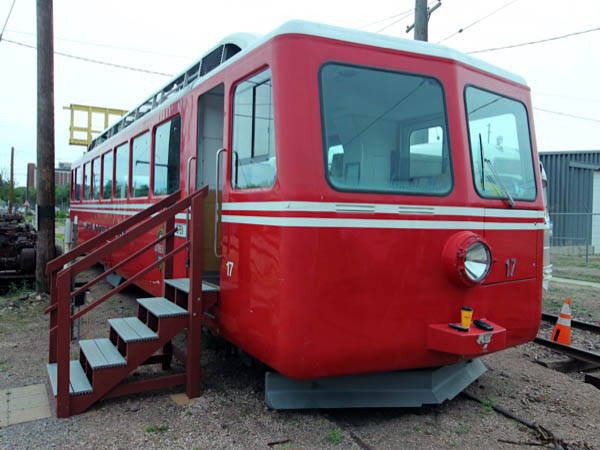
Colorado Springs, Co / May 2023 / RWH
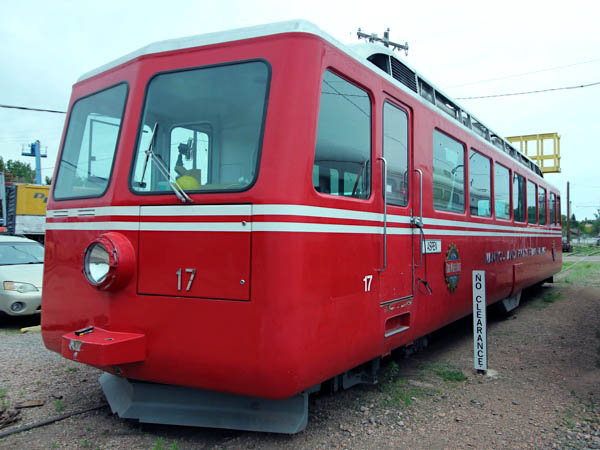
Colorado Springs, Co / May 2023 / RWH
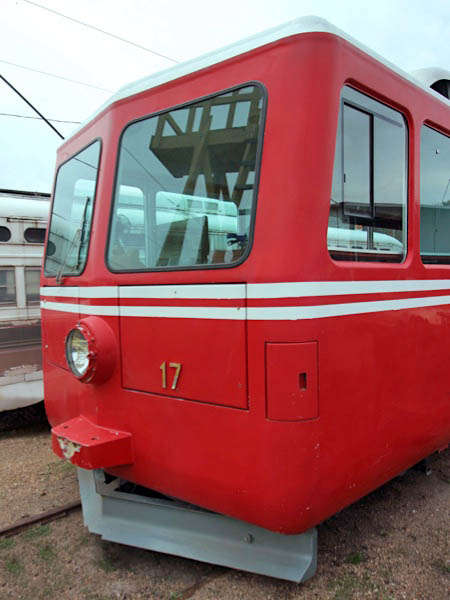
Colorado Springs, Co / May 2023 / RWH
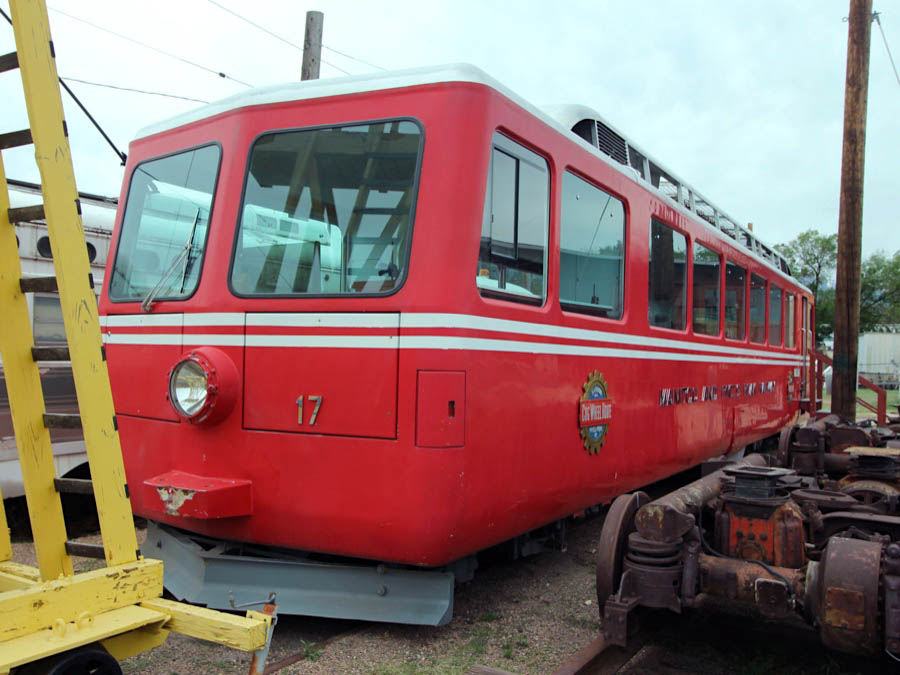
Colorado Springs, Co / May 2023 / RWH
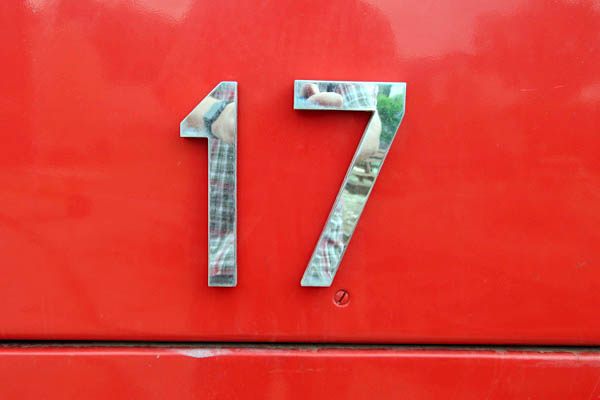
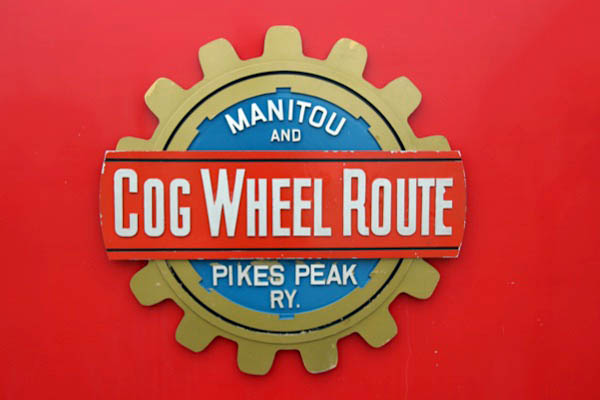
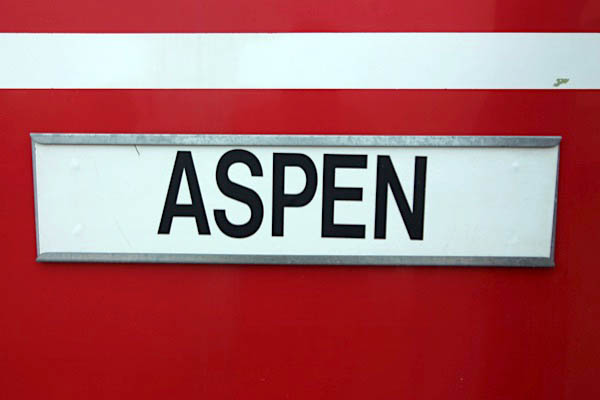
May 2023 / RWH
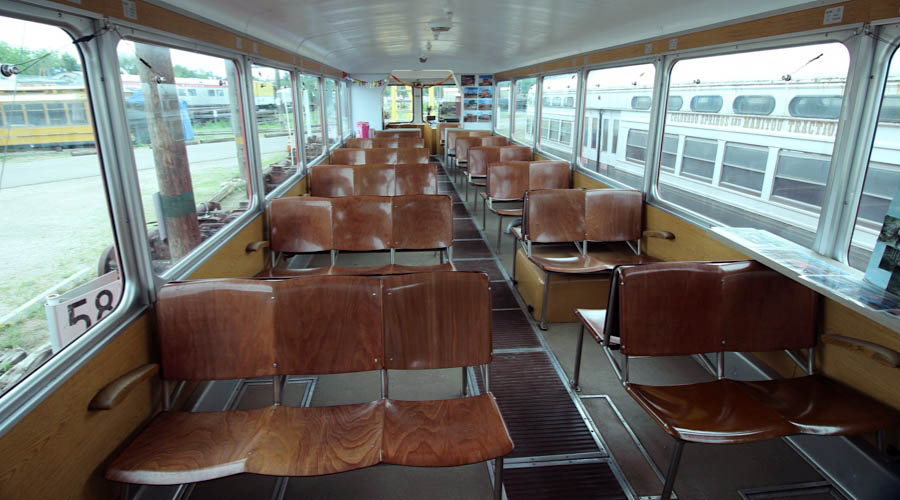
May 2023 / RWH
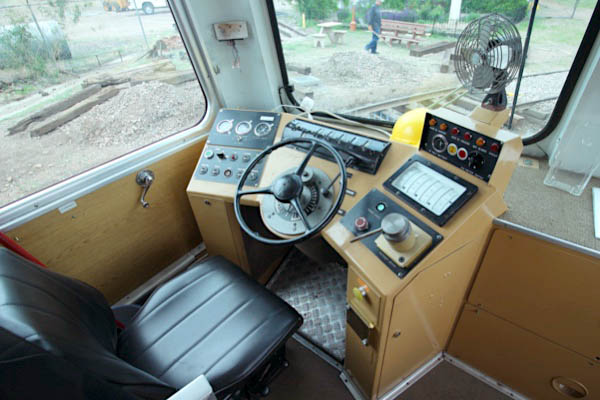
May 2023 / RWH
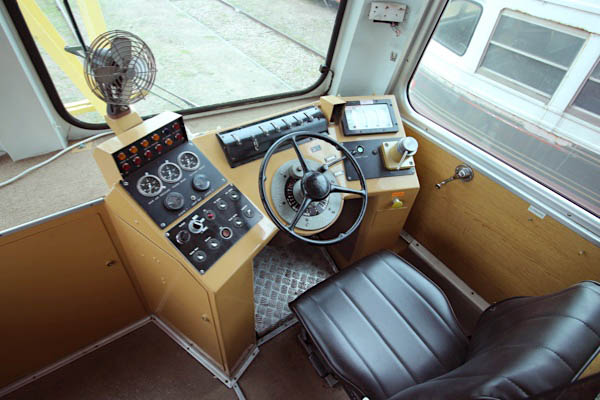
May 2023 / RWH

May 2023 / RWH
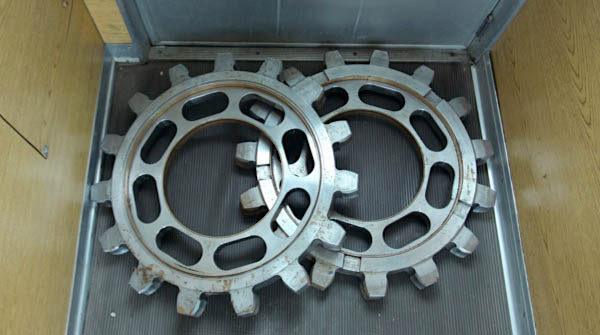
May 2023 / RWH
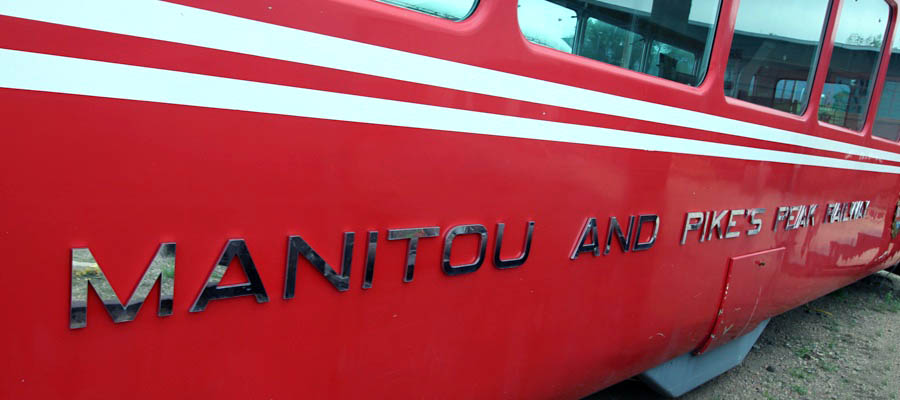
May 2023 / RWH

May 2023 / RWH

See also our complete Pikes Peak Cog Railway featured scrapbook in Preservation
Electric Bus
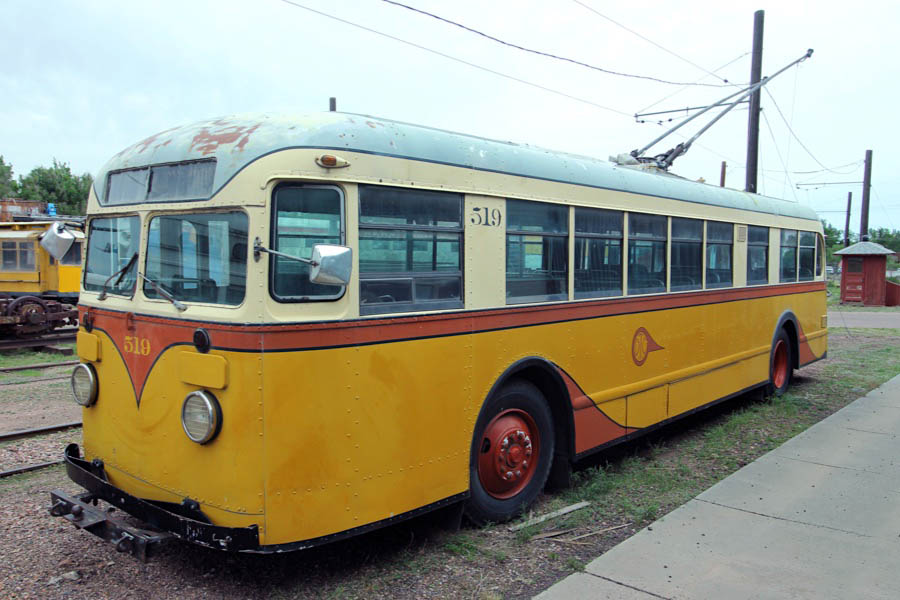
Denver Tramway Corporation #519
Colorado Springs, Co / May 2023 / RWH
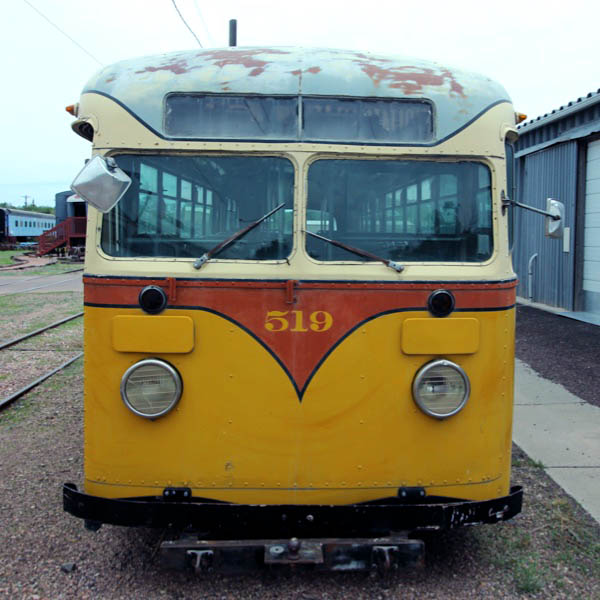
Colorado Springs, Co / May 2023 / RWH
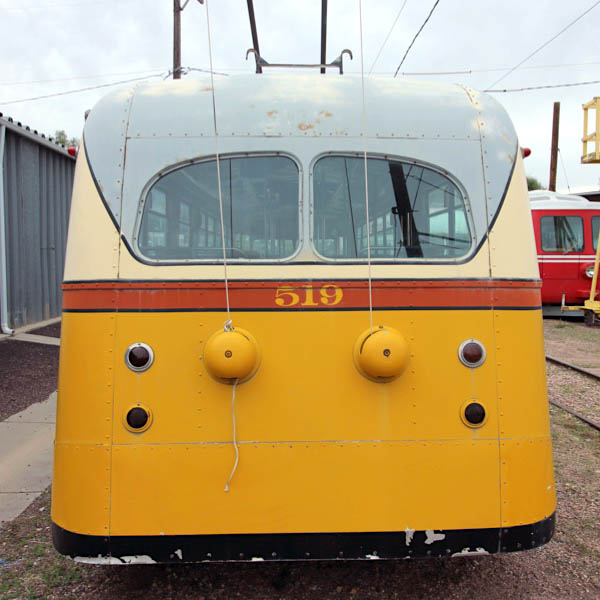
Colorado Springs, Co / May 2023 / RWH
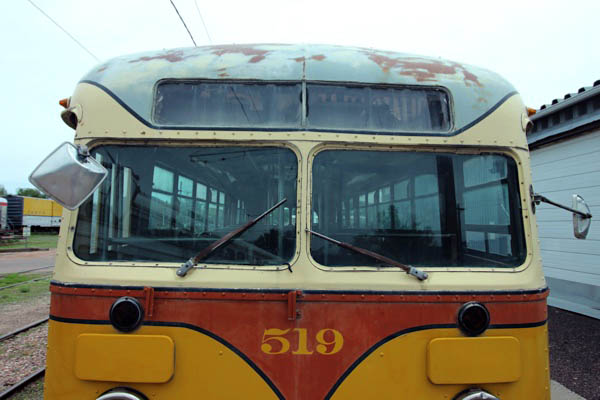
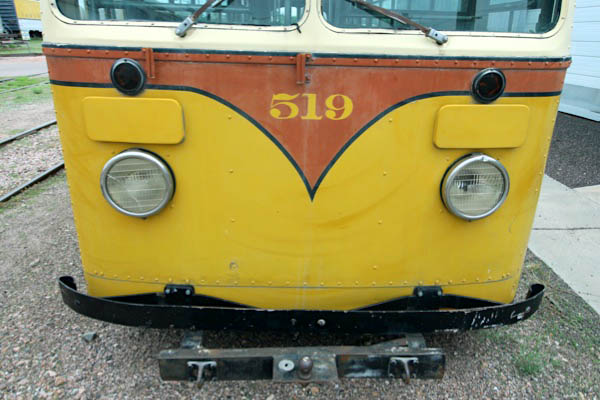
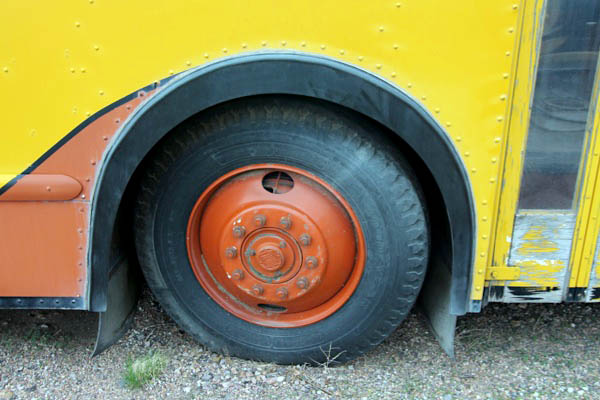

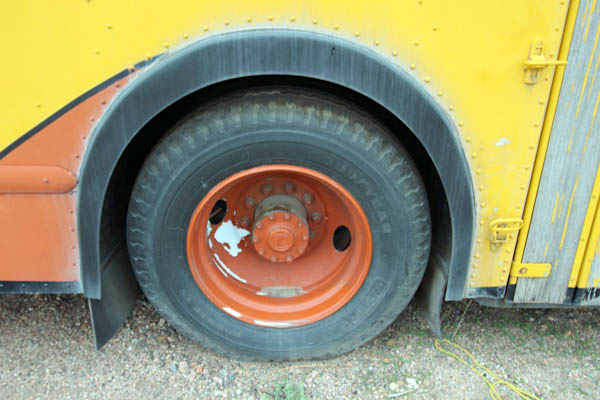

May 2023 / RWH
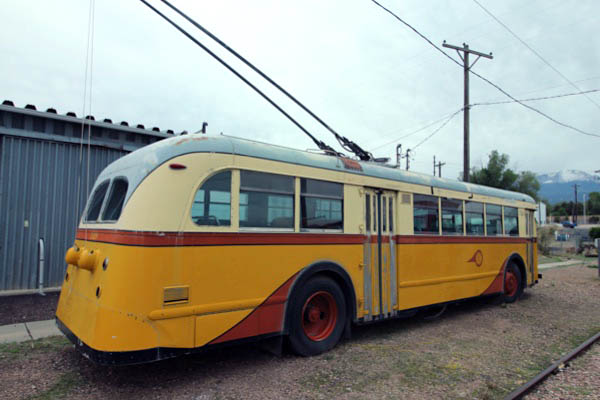
Colorado Springs, Co / May 2023 / RWH
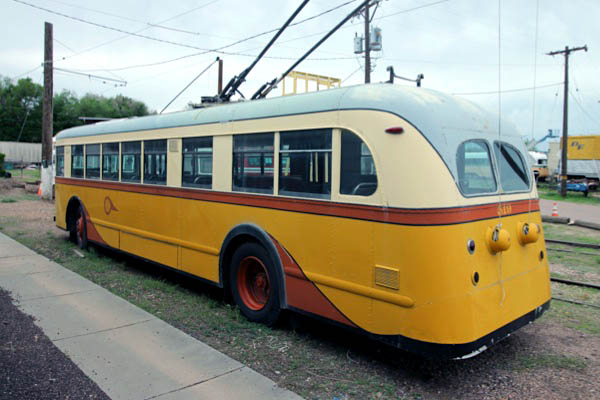
Colorado Springs, Co / May 2023 / RWH
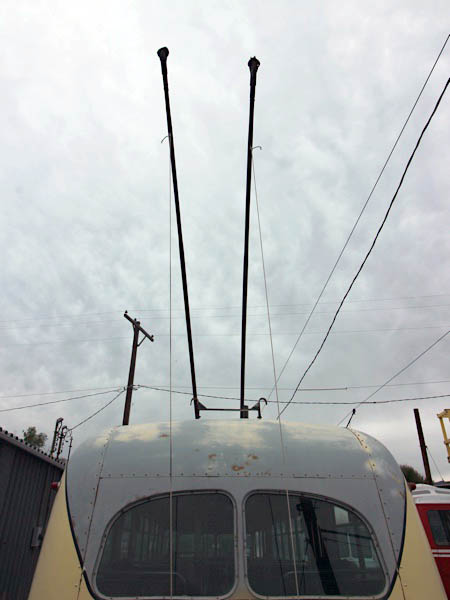


May 2023 / RWH
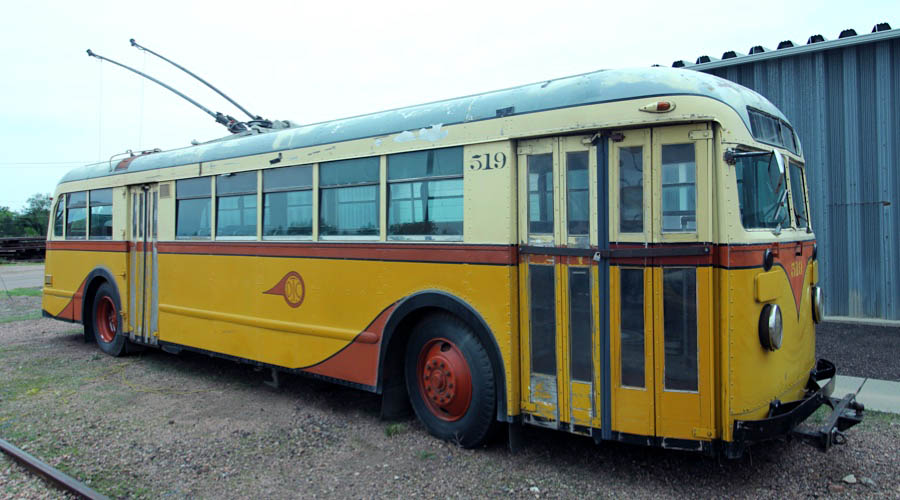
Colorado Springs, Co / May 2023 / RWH
Passenger
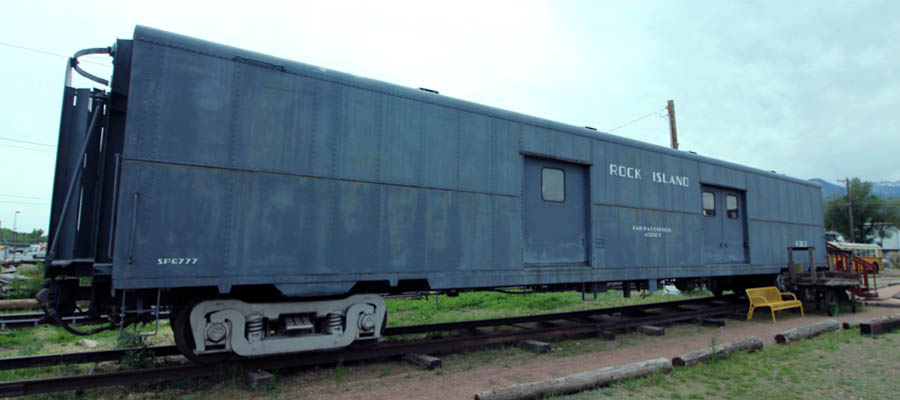
Southern Pacific #6777
Colorado Springs, Co / May 2023 / RWH
Southern Pacific #6777 is a 4-door streamlined baggage car built in the 1960s. Pikes Peak Trolley Museum has painted the car for Rock Island Lines and uses the structure to house a small museum devoted to Rock Island operations in the Colorado Springs area.
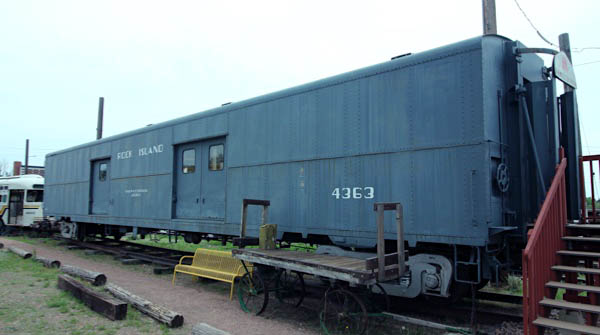
Colorado Springs, Co / May 2023 / RWH
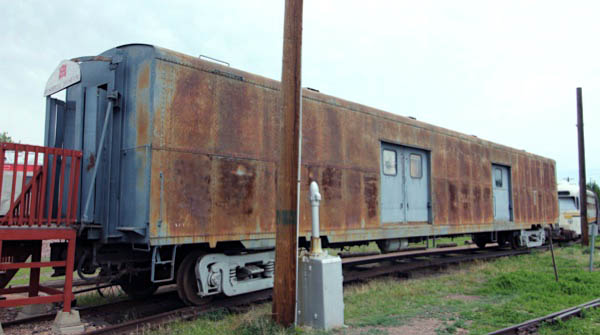
Colorado Springs, Co / May 2023 / RWH
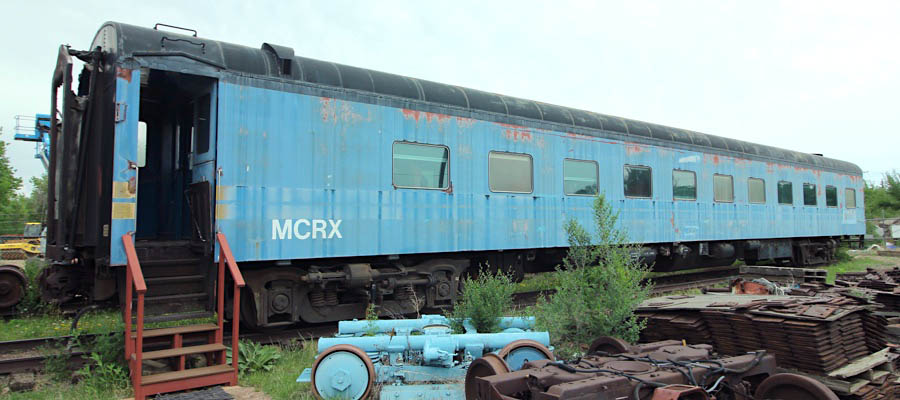
VIA Rail #5733
Colorado Springs, Co / May 2023 / RWH
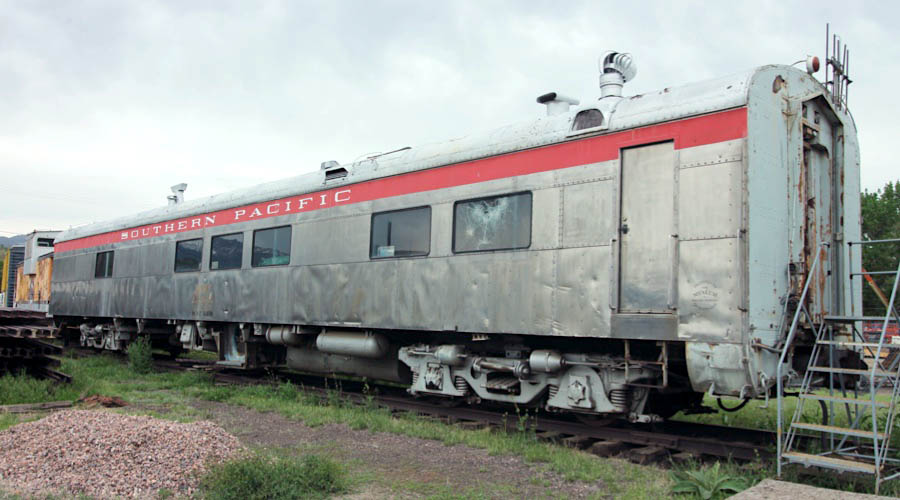
Southern Pacific #10400
Colorado Springs, Co / May 2023 / RWH
Freight

Denver & Rio Grande Western #01501
wide vision caboose / Colorado Springs, Co / May 2023 / RWH
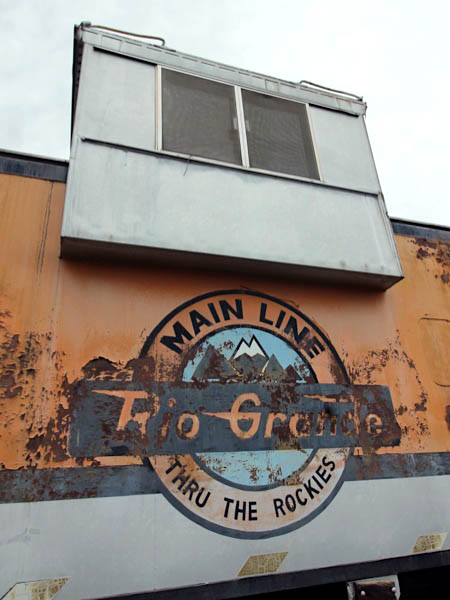
May 2023 / RWH
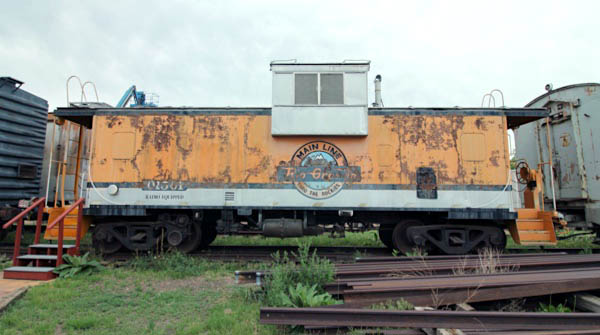
Colorado Springs, Co / May 2023 / RWH
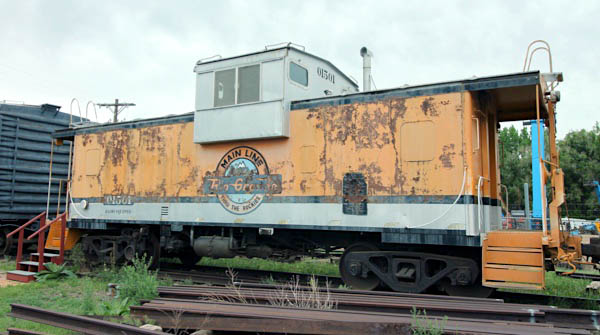
Colorado Springs, Co / May 2023 / RWH
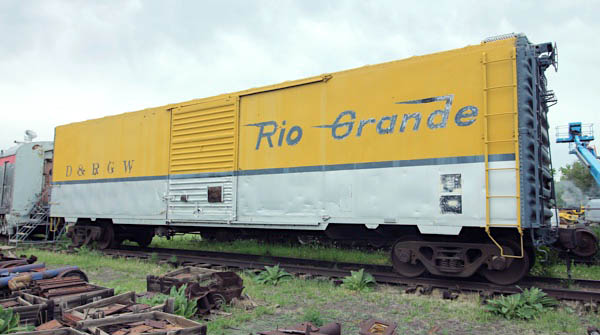
Colorado Springs, Co / May 2023 / RWH
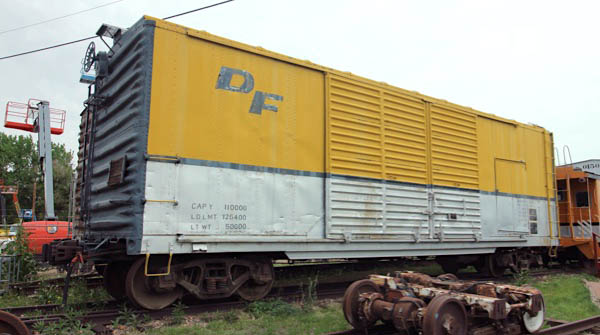
Colorado Springs, Co / May 2023 / RWH
Lagniappe



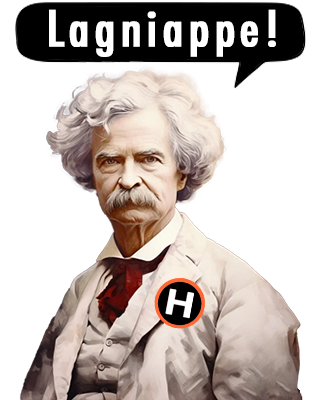

All the Presidents' Men
images and artwork RWH
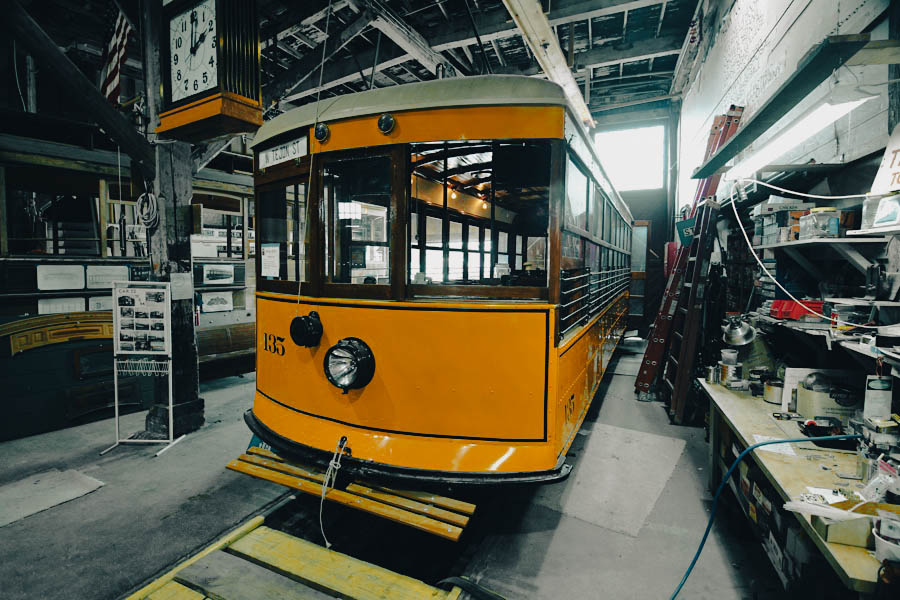
Birney Sanctuary
Colorado Springs, Co / May 2023 / RWH
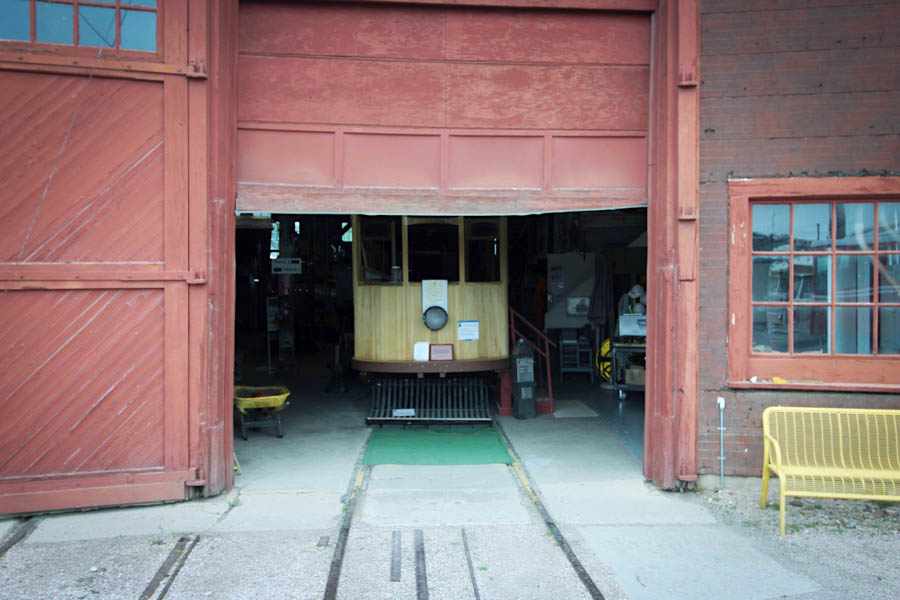
Hide and Seek
Colorado Springs, Co / May 2023 / RWH
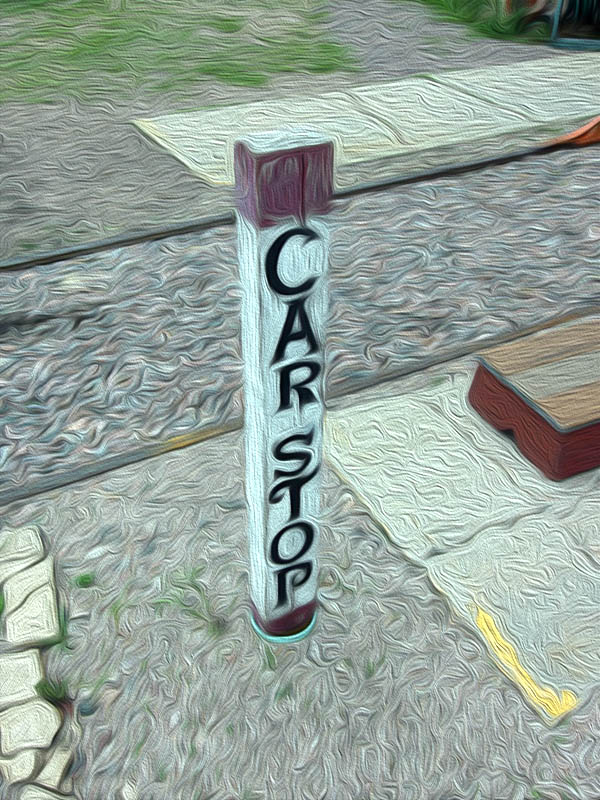
Car Stop
RWH

Put Out to Pasture
Colorado Springs, Co / May 2023 / RWH
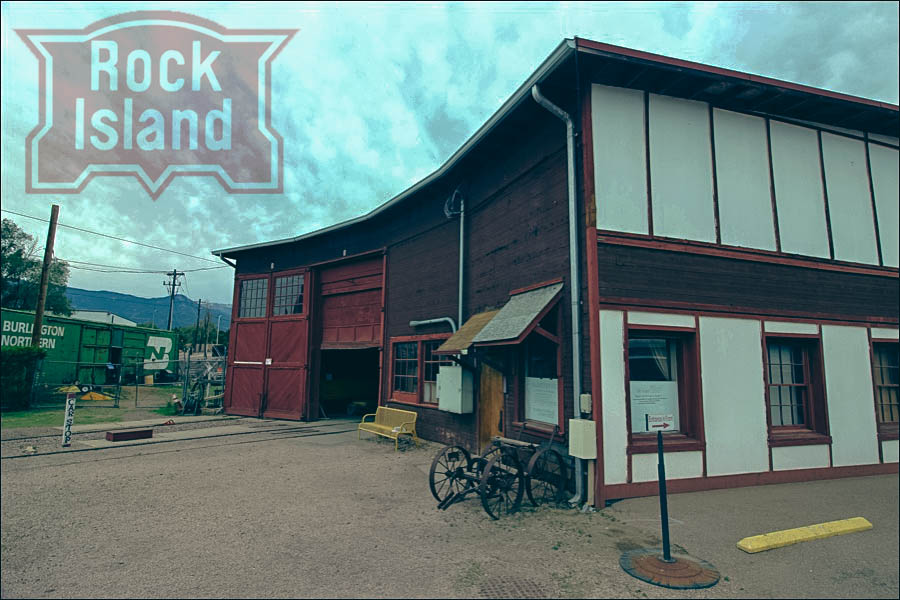
Rock Island Reigns
image and artwork RWH
Links / Sources
- Pikes Peak Trolley Museum and Restoration Shop website
- Uncover Colorado Pikes Peak Trolley Museum page
- A Handful of Colorado Springs’ Marvelous Museums

